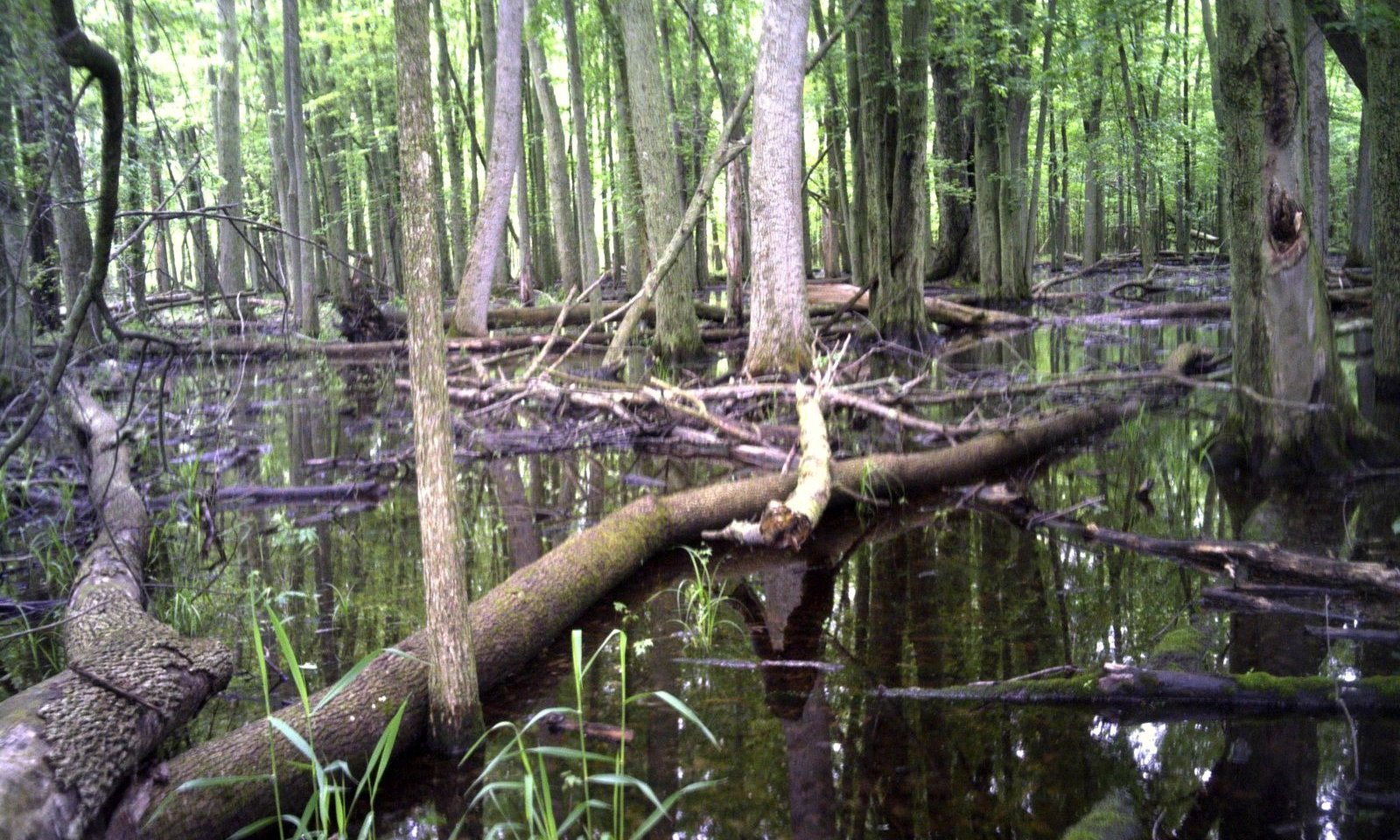

Natural Resources
Conservation Service
Ecological site F098XA006MI
Mucky Depressions
Last updated: 1/12/2024
Accessed: 12/16/2025
General information
Approved. An approved ecological site description has undergone quality control and quality assurance review. It contains a working state and transition model, enough information to identify the ecological site, and full documentation for all ecosystem states contained in the state and transition model.
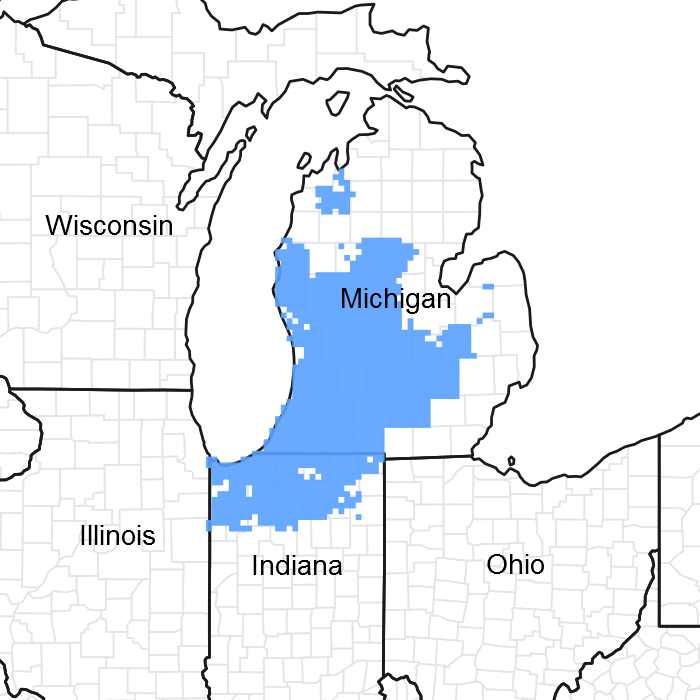
Figure 1. Mapped extent
Areas shown in blue indicate the maximum mapped extent of this ecological site. Other ecological sites likely occur within the highlighted areas. It is also possible for this ecological site to occur outside of highlighted areas if detailed soil survey has not been completed or recently updated.
MLRA notes
Major Land Resource Area (MLRA): 098X–Southern Michigan and Northern Indiana Drift Plains
This area is in the Eastern Lake Section of the Central Lowland Province of the Interior Plains. It is a broad, glaciated plain that is deeply mantled by till in the north and outwash to the south. Much of the area is nearly level to gently rolling. Elevation ranges from 183 to 391 m (600 to 1285 ft.). Local topographic relief averages 9 m and ranges up to 74 m (30 to 245 ft.). Highest relief occurs adjacent to river valleys eroded through moraines. Topography is more subdued south of the Atlantic/Gulf drainage divide near the Michigan/Indiana state line, elevations ranging from 185 to 280 m (605 to 920 ft.). Local topographic relief in the south averages 4 m and ranges up to 49 m (10 to 160 ft.).
The surface of this area is covered by 30 to 150 m (100 to 500 ft.) of glacial drift in most areas. At the northern edge of the area, the drift is more than 100 meters (300 ft.) thick. From the Grand River basin northward, most of the drift consists of till from the Saginaw Lobe of the Wisconsin Ice Sheet. From the Kalamazoo River basin southward, there are significant deposits of unconsolidated sand and gravel outwash formed between major lobes of the receding Wisconsin Ice Sheet. The outwash deposits are reworked as sand dunes in the Kankakee River basin.
The bedrock beneath the glacial deposits in this area have subsided in the form of a basin. The center of this basin is in the north-central part of the area. Pennsylvanian-age sandstone are in the center of the basin, and Mississippian-age sandstone and shale beds form the outer rings of the basin. In a few areas the drift deposits are less than 2 m (6 ft.) thick, where glacial outwash channels have eroded to limestone bedrock in Grand Rapids, and where sandstone bedrock cuestas peak in elevation near Hillsdale, Michigan. A sandstone cliff
less than 15 m high (less than 50 ft.) occurs along a short stretch of the Grand River in Grand Ledge, Michigan.
Most of the rivers in this area are short because of their proximity to the Great Lakes east and west of the area. The largest watersheds, the St. Joseph, Grand, and Kalamazoo Rivers drain into Lake Michigan. The southern extent of the MLRA is drained by the Kankakee River of the Mississippi River watershed.
Classification relationships
Among the USFS ecoregional framework (Cleland et al., 2007), most of MLRA 98 is represented by the Humid Temperate Domain (200), Hot Continental Division (220), Midwest Broadleaf Forest Province (222), South Central Great Lakes Section (222J), subsections 222Jc, 222Jg, 222Jh, and 222Jf. Similar sites within the portion of MLRA 98 that overlap the Prairie Division (250) and Prairie Parkland Province
(251) are treated as separate ecological sites. MLRA 98 recently was adjusted to exclude portions of Warm Continental Division (210), Laurentian Mixed Forest Province (212) to the north, and subsections 222Ja and 222Jb to the northwest.
Among the EPA ecoregional framework (Omernik and Griffith, 2014), most of MLRA 98 falls within Eastern Temperate Forests (Level I: 8), Mixed Wood Plains (Level II: 8.1), Southern Michigan/Northern Indiana Drift Plains (Level III: 56), and Level IV: 56b, 56g, and 56h. Similar sites within the portion of MLRA 98 that overlap the Central USA Plains (Level II: 8.2) and Central Corn Belt Plains (Level III: 54) are treated as separate ecological sites. MLRA 98 recently was adjusted to exclude portions of Northern Forests (Level I: 5), Mixed Wood Shield (Level II: 5.2), Northern Lakes and Forests (Level III: 50) to the north, and level IV: 56d and 56f to the northwest.
Ecological site concept
The modal concept of the Mucky Depressions is organic soils (typically muck) of intermediate pH levels (5-7). Small delineations occur as base slope seeps. May occur on former lakebeds as organic flats with minerotrophic groundwater influence, and some may have accumulated carbonates (limnic materials) early in development (generally lower in the profile). Vegetation tends to reflect moderate to high fertility in moderately acid sites, but strongly acidic or alkaline, marly sites are very low in fertility and have bog-like and fen-like species compositions, respectively.
The distinction between acidic, circumneutral mucks, and carbonate-rich mucks requires more investigation. Sometimes a lens of oligotrophic rainwater dominates near the surface soil chemistry and vegetation composition, without a strong relationship with marl presence below. Conversely, marl presence is not a necessary indicator of calcareous groundwater-dominated soil chemistry or species composition. Intermediate pH reaction classes may be needed to properly delineate soil map units that better reflect species composition.
Similar sites
| R098XB028IN |
Kankakee Mucky Depressions Kankakee Mucky Depressions occur in a slightly warmer climate to the south and have a somewhat more open prairie vegetation. May share the same map units as Mucky Depressions. |
|---|---|
| F098XA007MI |
Acidic Peaty Depressions Acidic Peaty Depressions are more acidic than Mucky Depressions, but have similar very poorly drained mucky or peaty substrates. |
| F096XB027MI |
Mucky Depression Mucky Depression in MLRA 96 to the northwest is expected to have cooler summers with northerly vegetation types. Often the same map units are used across MLRA boundaries. |
| F094AA013MI |
Snowy Mucky Depression Snowy Mucky Depression in MLRA 94A to the north have much cooler summers and winters with more northerly vegetation types. Often the same map units are used across MLRA boundaries. |
| F097XA030MI |
Mucky Depression Mucky Depression in MLRA 97 to the west may be the same as Mucky Depression in MLRA 98, with the main difference being higher snowfall and milder winter temperatures, and is not expected to vary in its range of vegetation types. Often the same map units are used across MLRA boundaries. |
| R098XA002MI |
Inland Salt Marshes Inland Salt Marshes are mapped within the same soil component, differing only in salt content. They have historically been ignored due to their rarity. |
Table 1. Dominant plant species
| Tree |
(1) Acer rubrum |
|---|---|
| Shrub |
Not specified |
| Herbaceous |
(1) Onoclea sensibilis |
Physiographic features
Mucky Depressions ecological site occupies old lakebeds and depressions in sandy ice-contact terrain, pitted outwash plains, base slope seeps, and outwash channel flats, wherever the land intersects the water table, especially in porous substrates.

Figure 2. Soil block diagram showing relationship among soil series on the landscape.
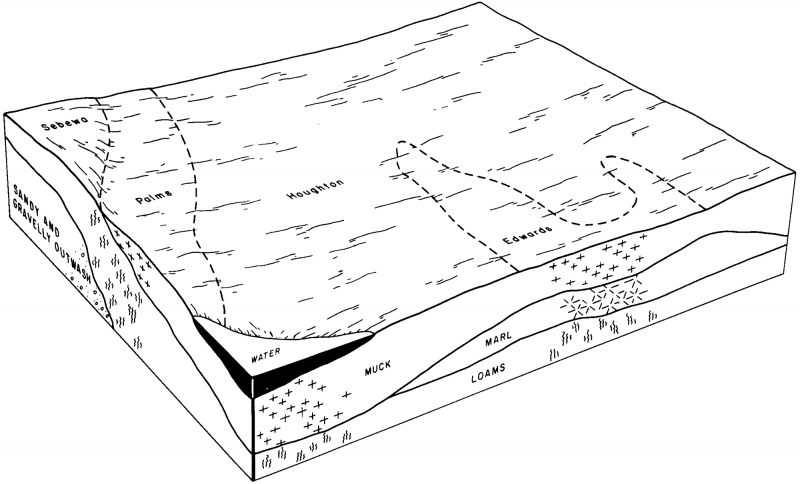
Figure 3. Soil block diagram showing relationship among soil series on the landscape.
Table 2. Representative physiographic features
| Geomorphic position, flats |
(1) Dip |
|---|---|
| Geomorphic position, hills |
(1) Base Slope |
| Slope shape up-down |
(1) Concave |
| Hillslope profile |
(1) Toeslope |
| Landforms |
(1)
Outwash plain
> Pitted outwash plain
(2) Outwash plain > Channel (3) Ice-margin complex > Depression |
| Runoff class | Negligible to low |
| Flooding frequency | None |
| Ponding duration | Very brief (4 to 48 hours) to very long (more than 30 days) |
| Ponding frequency | Rare to frequent |
| Elevation | 591 – 984 ft |
| Slope | 2% |
| Ponding depth | 12 in |
| Water table depth |
Not specified |
| Aspect | Aspect is not a significant factor |
Climatic features
This ecological site experiences a humid continental climate with mild summers and cold winters. Precipitation is moderately well distributed through the year with higher amounts during the growing season than the winter. Temperature extremes are moderated by the Great Lakes compared to other inland continental locations, though not as much as MLRAs directly bordering the Great Lakes. Mean annual extreme minimum temperatures range from -26.6 to -20.8°C (-16 to -5°F), which falls within hardiness zones 5a to 6a. Annual snowfall is enhanced by the Great Lakes, mainly on the western half of the MLRA.
Table 3. Representative climatic features
| Frost-free period (characteristic range) | 118-133 days |
|---|---|
| Freeze-free period (characteristic range) | 152-165 days |
| Precipitation total (characteristic range) | 32-38 in |
| Frost-free period (actual range) | 115-135 days |
| Freeze-free period (actual range) | 145-173 days |
| Precipitation total (actual range) | 32-41 in |
| Frost-free period (average) | 127 days |
| Freeze-free period (average) | 159 days |
| Precipitation total (average) | 35 in |
Figure 4. Monthly precipitation range
Figure 5. Monthly minimum temperature range
Figure 6. Monthly maximum temperature range
Figure 7. Monthly average minimum and maximum temperature
Figure 8. Annual precipitation pattern
Figure 9. Annual average temperature pattern
Climate stations used
-
(1) FLINT BISHOP INTL AP [USW00014826], Flint, MI
-
(2) LANSING CAPITAL CITY AP [USW00014836], Lansing, MI
-
(3) DOWAGIAC 1 W [USC00202250], Dowagiac, MI
-
(4) HILLSDALE [USC00203823], Hillsdale, MI
-
(5) SAINT JOHNS [USC00207280], Saint Johns, MI
-
(6) THREE RIVERS [USC00208184], Three Rivers, MI
-
(7) BATTLE CREEK KELLOGG AP [USW00014815], Battle Creek, MI
-
(8) LAPORTE [USC00124837], La Porte, IN
-
(9) COLDWATER ST SCHOOL [USC00201675], Coldwater, MI
-
(10) GULL LK BIOLOGICAL STN [USC00203504], Augusta, MI
-
(11) HASTINGS [USC00203661], Hastings, MI
-
(12) OWOSSO WWTP [USC00206300], Owosso, MI
-
(13) ALMA [USC00200146], Alma, MI
-
(14) EAST LANSING 4 S [USC00202395], Holt, MI
-
(15) HOWELL WWTP [USC00203947], Howell, MI
-
(16) IONIA 2SSW [USC00204078], Ionia, MI
-
(17) JACKSON REYNOLDS FLD [USW00014833], Jackson, MI
-
(18) GRAND RAPIDS [USW00094860], Grand Rapids, MI
-
(19) PRAIRIE HEIGHTS [USC00127102], LaGrange, IN
-
(20) WANATAH 2 WNW [USC00129222], Valparaiso, IN
-
(21) CHARLOTTE [USC00201476], Roscommon, MI
-
(22) FLINT 7 W [USC00202851], Flushing, MI
-
(23) GREENVILLE 2 NNE [USC00203429], Greenville, MI
Influencing water features
The Mucky Depressions ecological site remains saturated for most of the year, and may be seasonally ponded to shallow depths.
Wetland description
Mucky Depressions generally are a function of groundwater seepage and mostly are classified as hydrogeomorphic slope wetlands. Groundwater generally is a stable source of water, creating a more or less constant level of saturation. These usually are minerotrophic sources of water that are low in phosphorus and nitrates. Portions of the depression that are isolated from both surface run off and groundwater are subject to mostly rain water, and are lower in minerals (ombrotrophic). Surface runoff near the edges of depressions and where groundwater sources are shallow can be high in macronutrients (nitrates and phosphates), and is more vulnerable to the eutrophic impacts of fertilizer from adjacent farmlands. Some are influenced by fluctuating lake levels (hydrogeomorphic lacustrine) if adjacent to lakes.
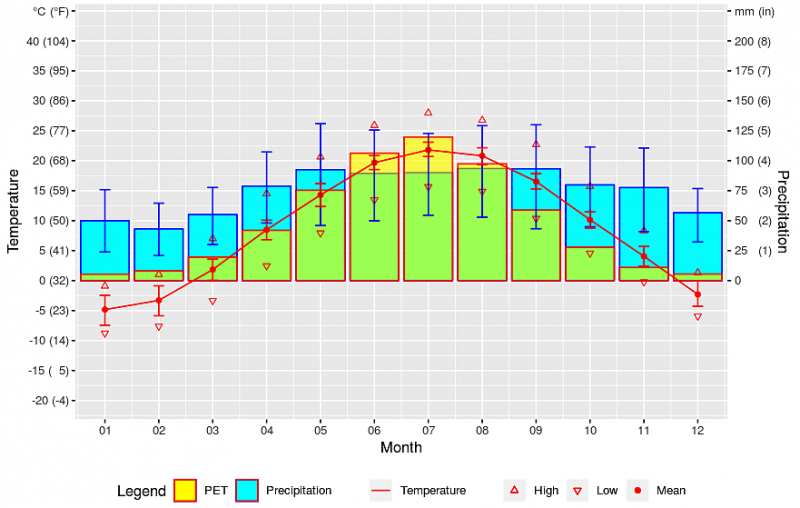
Figure 10. Climate of MLRA 98 (LRU A). Based on 1981-2010 Climatic Normal monthly temperature and precipitation (20th and 80th percentiles) and estimated potential evapotranspiration (PET).
Soil features
Soils of the Mucky Depressions are very poorly drained organic Histosols or Histic subgroups (peat or muck surface greater than or equal to 20 cm thick), with moderate pH levels. They are commonly classified as Typic Haplosaprists, Terric Haplosaprists, Limnic Haplosaprists, and Histic Humaquepts, and commonly are mapped as Houghton, Carlisle, Adrian, Palms, Edwards, and Martisco series.
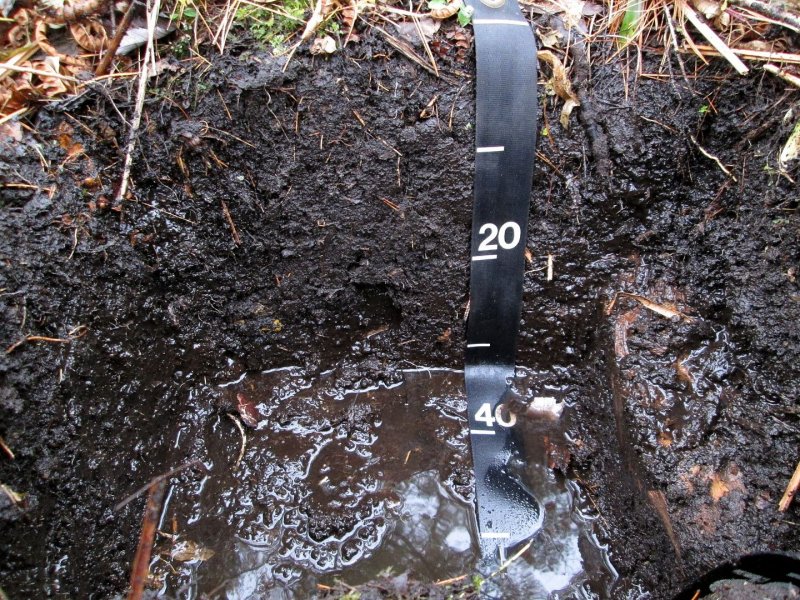
Figure 11. An example of muck (sapric organic matter) in a soil profile with a high water table.
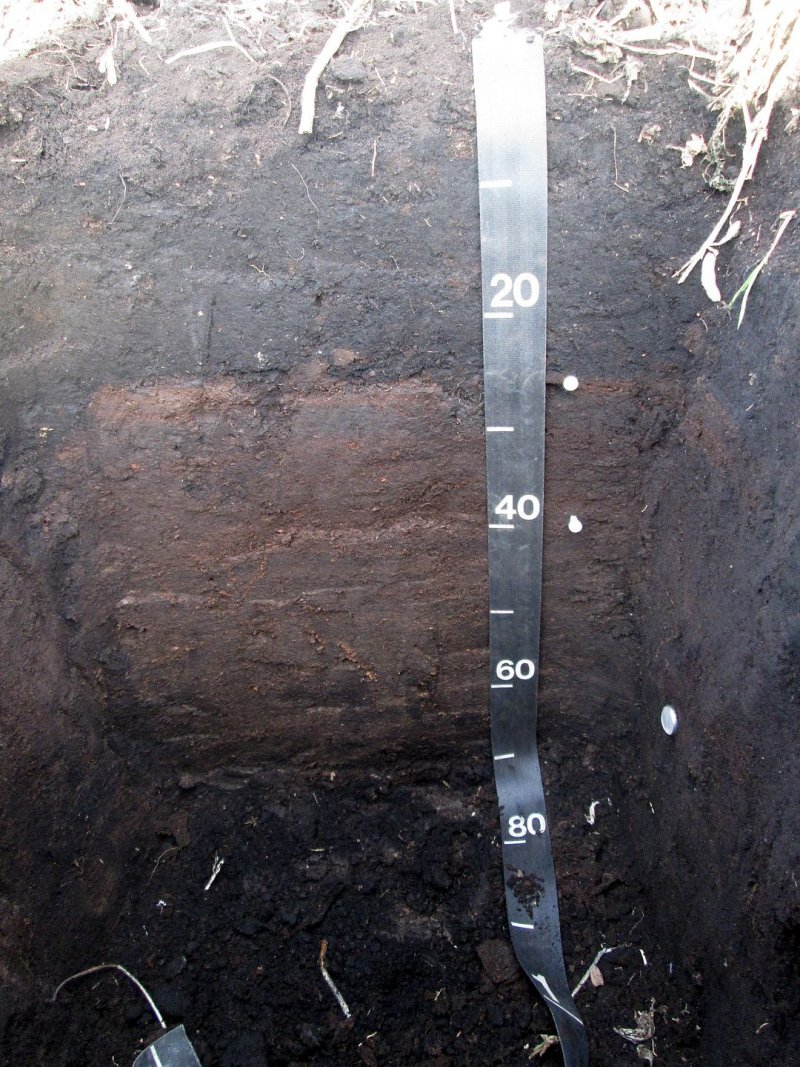
Figure 12. An example of drained muck over peat in a soil profile . Organic epipedon (top layer) thickness of at least 40 cm means this is a Histosol or an organic soil order.
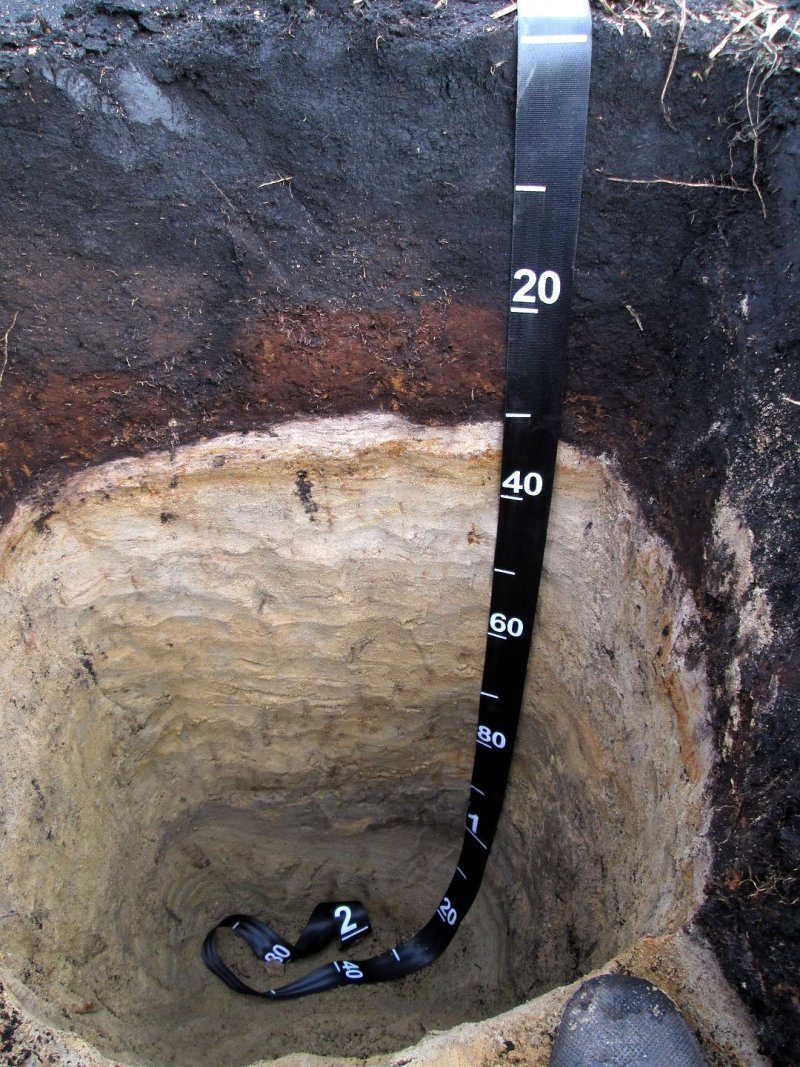
Figure 13. An example of drained muck over peat over sand in a soil profile . Organic epipedon (top layer) thickness of at least 20 cm and less than 40 cm means this is a Histic subgroup of a mineral soil.
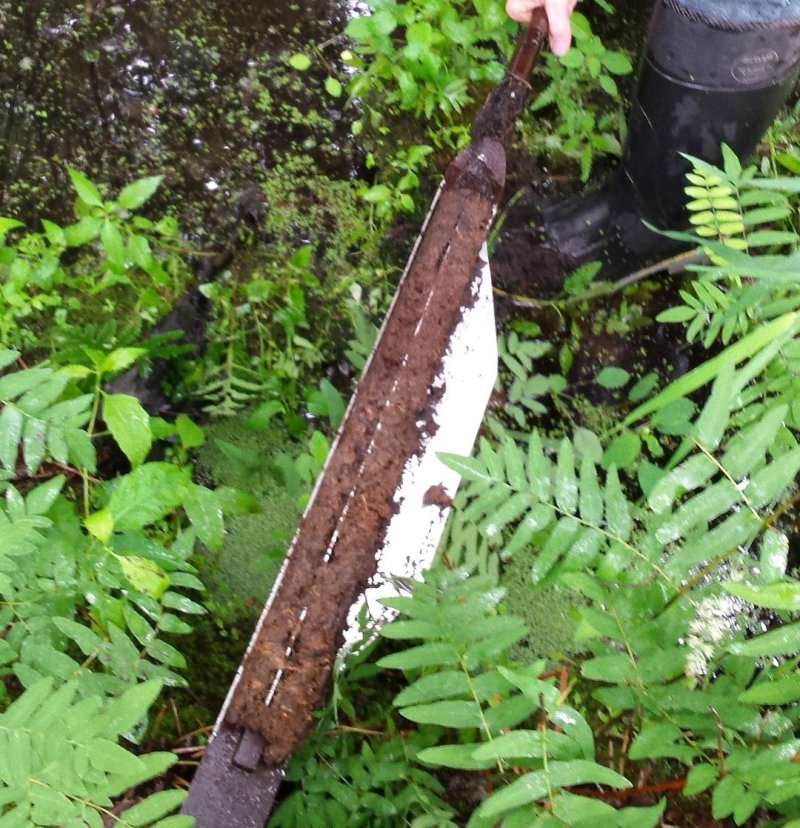
Figure 14. An example of peat extracted with a peat sampler.
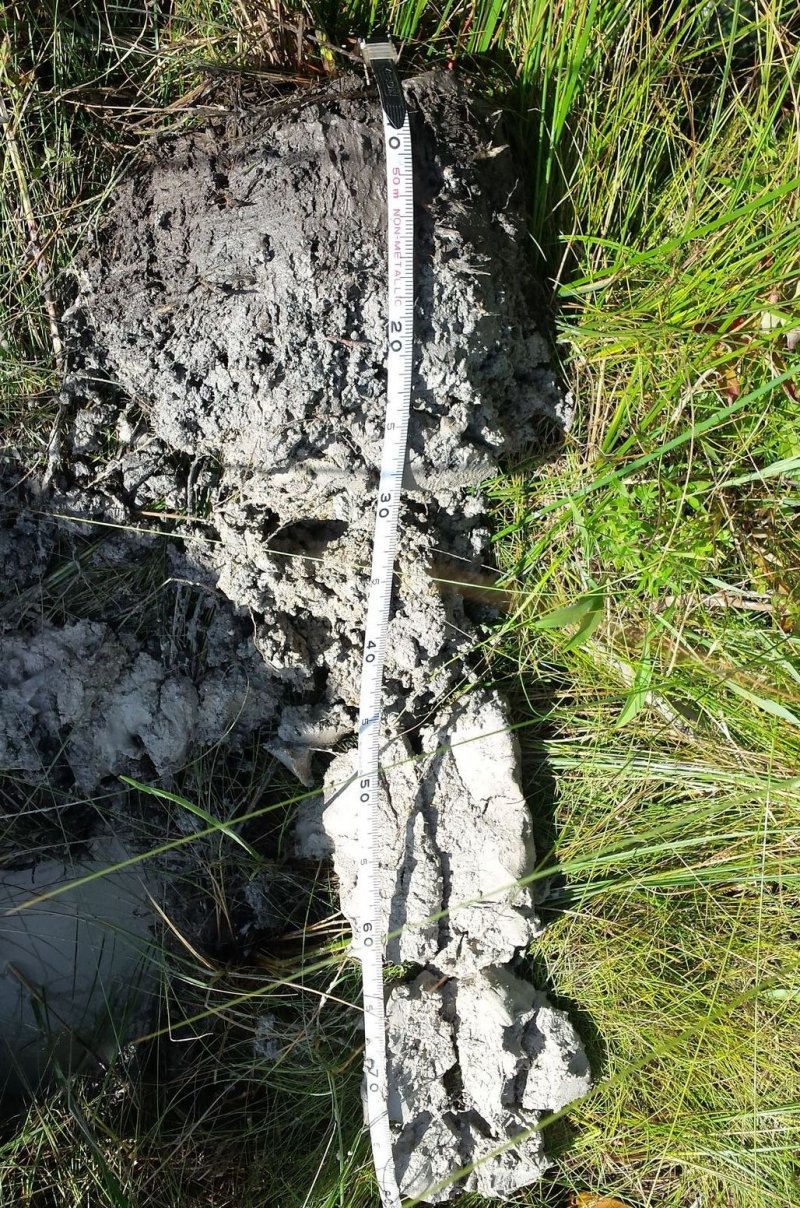
Figure 15. An example of marl occurring near the top of an extracted soil profile.

Figure 16. An example of marl containing mollusk shells.
Table 4. Representative soil features
| Parent material |
(1)
Organic material
(2) Marl |
|---|---|
| Surface texture |
(1) Muck (2) Mucky peat (3) Marl |
| Drainage class | Very poorly drained |
| Soil depth | 79 in |
| Surface fragment cover <=3" | Not specified |
| Surface fragment cover >3" | Not specified |
| Available water capacity (0-39.4in) |
13.78 – 21.65 in |
| Soil reaction (1:1 water) (0-19.7in) |
5.5 – 8 |
| Subsurface fragment volume <=3" (0-59.1in) |
Not specified |
| Subsurface fragment volume >3" (0-59.1in) |
Not specified |
Table 5. Representative soil features (actual values)
| Drainage class | Very poorly drained |
|---|---|
| Soil depth | 79 in |
| Surface fragment cover <=3" | Not specified |
| Surface fragment cover >3" | Not specified |
| Available water capacity (0-39.4in) |
Not specified |
| Soil reaction (1:1 water) (0-19.7in) |
5 – 8 |
| Subsurface fragment volume <=3" (0-59.1in) |
Not specified |
| Subsurface fragment volume >3" (0-59.1in) |
Not specified |
Ecological dynamics
Mucks form where net primary productivity greatly exceeds the rate of decomposition due to the lack of oxygen under seasonally or semipermanently saturated conditions. Fens occur under semipermanently saturated conditions, whereas wet meadows prevail under seasonally saturated conditions. Peat accumulation in fens is mostly from dead sedges (Cyperaceae) and brown mosses (Scorpidium scorpioides), while in acid bog sites it is due to peat mosses (Sphagnum spp.). More seasonal hydrology allows more decomposition of brown peat into black muck, and a greater production of plant cover. The thickness of peat and muck is directly related to the duration of non-saturated conditions, whereas longer periods of dryness would tend to result in more thorough decay of organic matter, and a thinner veneer of muck over mineral soil. However, hydrology may change over time, and current muck thickness is as much a legacy of historic hydrology as it is an indicator of current hydrology. Thus, the relationship to present vegetation is only loosely related to muck thickness.
In submergent areas high in dissolved calcium, the green algal genus Chara precipitates calcium carbonate within its cell walls. Over time, dead Chara contributes to the accumulation of marl, which may later become buried in peat and muck.
Michigan Natural Features Inventory (Kost et al., 2010) describes a range of communities that occupy Mucky Depressions, which are arrayed along hydrologic, nutrient, and structural development gradients. Succession from open communities to shrub-dominated through forested communities is kept in check or reversed by fire, beaver activity, and windthrow. However, the rate of succession is slow in the wettest areas, and in areas with more extreme alkalinities or acidities that inhibit nutrient availability.
Fire frequency generally is greatest where adjacent upland sites are oak savanna and prairie rather than closed forest, which was historically the case in the southern half of the MRLA, where prairie fens and wet meadows were most common. Fire has the effect of killing aboveground biomass, and thus conferring an advantage of herbaceous plants over woody species. Graminoids in these open communities provide the main fuels, presuming that standing dead biomass is dry enough to sustain fire. Once a site becomes forested, low understory graminoid cover and thin leaf litter that quickly integrates into the substrate tend to reduce the potential for fire to carry.
The lack of fire adaptation among the dominant tree species is evident from the generally thin bark among the maples.
Beavers (Castor canadensis) affect succession in two distinct ways. First, beavers directly remove trees and shrubs both as a food source and as building materials. Second, beavers may inundate an area via dam building, causing mortality in species of trees and shrubs that are less flood-tolerant. Mucks that occur adjacent to flowing water have the greatest opportunity for beavers to modify water levels.
Windthrow mostly creates single tree gaps. However, swamp forests are more susceptible to large blowdowns than upland sites, because high water tables limit rooting depth and organic substrates are structurally less stable.
The interaction among all these disturbance regimes, including fire, is summarized in the narratives for the broadly defined Central Interior and Appalachian Swamp Systems, and Central Interior and Appalachian Shrub-Herbaceous Wetland Systems Landfire models (USGS, 2008). The ecosystems assignable to swamps were modeled to have a mean fire return interval (probability) of 1,000 years, a beaver flooding interval of 300 years, a patch windthrow interval of 100 years, and a catastrophic windthrow of 600 years. The systems assignable to fens and wet meadows, were modeled to have a fire return interval of 10 years, and a beaver flooding interval of 200 years. A 1,000 year return interval isn’t intended to imply an event taking place regularly every 1,000 years, but rather the probability of 1 out of 1,000 (0.1%) for the event to take place in any given year. As such different patches of the site may not experience the same event simultaneously such that across a large enough area in can be expected that 0.1% of the area could experience the event during an average year. But processes of species dispersal, minimum viable population size, and the species composition of the surrounding landscape (e.g., Driscoll, et al., 2013) must be considered in context of fragmented habitat.
Zonation along a hydrologic gradient is responsible for the maintenance of contrasting plant communities in relative proximity. This also allows for vegetation to respond to short-term changes in climate given the immediate seed source for species in adjacent communities. Several years of increased potential evapotranspiration and lower precipitation can lower local water tables and thereby move the boundaries between zones. These drier conditions are represented by community pathways toward less hydric communities such as from marsh to wet meadows. Likewise, several years with decreased potential evapotranspiration and higher precipitation can raise local water tables, resulting in a shift toward more hydric communities.
The wettest sites are represented by submergent marsh (Nuphar advena - Nymphaea odorata Aquatic Vegetation), but aquatic vegetation such as this are more representative of subaqueous ecological sites rather than Mucky Depressions. Nevertheless, the elements of aquatic vegetation may occur locally among emergent communities.
The emergent marsh (Schoenoplectus tabernaemontani - Typha spp. - (Sparganium spp., Juncus spp.) Marsh, Typha spp. Midwest Marsh) community represents the wettest sites normally found in Mucky Depressions, which are dominated by cattails and bulrushes. Marshes are typically ponded to at least 15 cm during part of the growing season. At higher macronutrient (nitrogen and phosphorous) loadings, cattail productivity may overwhelm the dominance of all other species. Native cattail (Typha latifolia) is outcompeted by non-native cattail (Typha angustifolia) and its hybrid (Typha ×glauca), particularly in higher nutrient or saline conditions. Factors that increase nutrient runoff include agriculture, while road salt is the main cause of saline conditions. The green alga, Chara, is an important submergent component of calcareous marshes. Chara is intolerant of high phosphate or nitrate concentrations, and may disappear when water becomes polluted (Lambert and Davy, 2011).
In areas that are seasonally saturated, southern wet meadow (Carex stricta - Carex spp. Wet Meadow) may form. Wet meadows are dominated by grasses and sedges like Carex stricta, Carex lacustris, Calamagrostis canadensis, but also have a diversity of forbs, including joe pye weed(Eutrochium maculatum), swamp aster (Symphyotrichum puniceum), rough-leaf goldenrod (Solidago patula), and mountain-mint (Pycnanthemum virginianum).
Without beaver activity and occasional fire spilling over from the uplands maintaining the open conditions, trees and shrubs come to dominate the site within 10 to 60 years (USGS, 2011). Marshy sites within Mucky Depression may succeed to a buttonbush (Cephalanthus occidentalis) dominated inundated shrub swamp (Cephalanthus occidentalis / Carex spp. Northern Shrub Swamp) without sufficient disturbance. Wet meadows succeed to shrub-carr (Cornus sericea - Salix spp. - (Rosa palustris) Shrub Swamp).
In the absence of beaver flooding, trees become established and the community succeeds to hardwood swamp (Acer (rubrum, saccharinum) - Fraxinus spp. - Ulmus americana Swamp Forest) after about 80 years. Fluctuating water table favors flood-tolerant silver maple (Acer saccharinum) and green ash (Fraxinus pennsylvanica), and is convergent with floodplain forest in species composition. This community has relatively high fertility in terms of macronutrients like nitrogen and phosphorous. The circumstances responsible for higher fertility in this community relates to pH and hydrology. Having intermediate pH levels (6-7) results in greater nutrient availability, while seasonal fluctuation in water table (oxygenation) can allow a greater turnover in macronutrients accumulated within the substrate. Sites with stable water tables tend to be dominated by red maple (Acer rubrum) and black ash (Fraxinus nigra), and is similar to other peatland communities
in species composition, being relatively nutrient poor. Areas with stable water tables along the northern and western borders may have conifers such as white pine (Pinus strobus) and eastern hemlock (Tsuga canadensis) for hardwood-conifer swamp (Pinus strobus - (Acer rubrum) / Osmunda spp. Swamp Forest). Tree and shrub establishment is most favored in less frequently inundated areas such as on microtopographic highs, which develop later in succession from upturned root masses of wind-toppled trees. Therefore, the wettest portions of a site require longer times for forest to become established.
The prairie fen (Dasiphora fruticosa ssp. floribunda / Carex sterilis - Andropogon gerardi - Arnoglossum plantagineum Fen, Cladium mariscoides - (Carex lasiocarpa, Hypericum kalmianum, Oligoneuron riddellii, Eleocharis elliptica) Fen) occupies areas in which groundwater maintains an almost constant soil saturation without ponding. Topographically elevated sites within the basin may have exposed marl that is more seasonally saturated. Fens support a unique short-statured flora of calcium specialists (calciphiles). The low nutrient environment is driven in part by the high pH levels; the extremely high levels of calcium limits the solubility of phosphorous and iron. The constant hydroperiod from a flow of groundwater maintains anoxic conditions that prevent the release organically stored nutrients.
Without disturbance, fens may succeed through shrub swamp phases to rich tamarack swamp (Larix laricina - Acer rubrum / (Rhamnus alnifolia, Vaccinium corymbosum) Swamp Forest). Continued succession will result in shade-intolerant tamarack (Larix laricina) to be replaced with shade-tolerant red maple (Acer rubrum), and potentially to a version of hardwood swamp. Under prior cooler climatic periods, northern whitecedar (Thuja occidentalis) would succeed tamarack as rich conifer swamp (Thuja occidentalis - Acer rubrum / Cornus sericea Swamp Forest). Rich Conifer Swamp was formerly infrequent in MLRA 98 prior to being cutover, but is more prevalent in adjacent MLRAs to the north (MLRAs 94A and 96). Relict stands of northern whitecedar do still exist in this MLRA, but after widespread logging excessive browse due to increased populations of white-tailed deer (Odocoileus virginianus) has severely limited its ability to regenerate.
More acidic conditions are transitional to peat bog (Chamaedaphne calyculata / Carex oligosperma - Eriophorum virginicum Acidic Peatland), and poor conifer swamp (Picea mariana / Ledum groenlandicum / Carex trisperma / Sphagnum spp. Open Bog Woodland), or another version of hardwood swamp (Acer rubrum, saccharinum) - Fraxinus spp. - Ulmus americana Swamp Forest) with acid indicators like Quercus palustris, Nyssa sylvatica, and Vaccinium corymbosum.
Rare areas with brackish groundwater influenced by Paleozoic salt deposits may be recognized as the Inland Salt Marsh ecological site represented by the Schoenoplectus maritimus - Atriplex patula - Eleocharis parvula Saline Marsh association. However, at present these saline sites have not been delineated as their own map units.
Unconverted stands of wet meadows, marshes, and swamps can be degraded by the addition of excess nutrient runoff, altering species composition; or through the introduction of Eurasian exotics such as purple loosestrife (Lythrum salicaria), reed canarygrass (Phalaris arundinacea), common reed (Phragmites australis ssp. australis), and glossy buckthorn (Frangula alnus).
Conversion to cropland involves the drainage of the land, followed by removal of vegetation, plowing the upper 20 to 30 cm of soil, and introduction of fertilizer. Results of an unpublished dynamic soil properties study conducted in 2015 by the Grand Rapids Soil Survey Office (in cooperation with the National Soil Science Lab in Lincoln, NE), suggests that farming mucky soils can result in soil becoming heavily compacted, high in nitrates and low in carbon-to-nitrogen ratios. Sites restored with native plants and with the hydrology partially restored, retained the higher nutrient levels and compaction characteristic of actively cultivated sites. Despite restoration with native plants, formerly cultivated sites may have significant coverage of invasive reed canarygrass (Phalaris arundinacea). Although opportunities of seed dispersal and disturbances are factors in invasive species presence, other studies suggest a connection with the high nutrient loads (Green and Galowitch, 2002).
The emerald ash borer (Agrilus planipennis) is causing a major transition in plant composition through the mortality of green ash (Fraxinus pennsylvanica) and black ash (Fraxinus nigra) from silver maple-green ash hardwood swamp to red maple-tamarack swamp phases respectively. The introduced pest causes 100 percent mortality of stems greater than 2.5 cm in diameter within five to ten years of infestation. This mortality will reduce the frequency of reproductively mature trees and thereby severely limit new seed production. As of 2020, many former ash stands have no living ash stems greater than 10 cm, but have vigorous seedling and sapling layers, and some basal sprouts from adult trees. There are some signs of success from biocontrol studies using introduced parasitoid wasps, but models of worst-case scenarios show the potential extirpation of ash populations within the next 30 years (Kappler et al., 2019).
State and transition model
More interactive model formats are also available.
View Interactive Models
Click on state and transition labels to scroll to the respective text
State 1 submodel, plant communities
Communities 2, 5, 6 and 7 (additional pathways)
Communities 3 and 7 (additional pathways)
State 2 submodel, plant communities
State 3 submodel, plant communities
State 1
Reference State
The Reference State consists of a spontaneous wild condition wherein non-native species are of low abundance and all native species retain viable populations. Structure and function of communities vary according to natural processes and disturbance regimes, with human influences limited to drivers that have the similar outcomes as natural processes. Communities range from marshes and fens to hardwood swamps. Dominant natural processes and disturbance regimes include fire, wind, and beaver activities.
Community 1.1
Hardwood Swamp: Acer (rubrum, saccharinum) - Fraxinus spp. - Ulmus americana Swamp Forest

Figure 17. Seasonal ponding in a silver maple swamp forest.
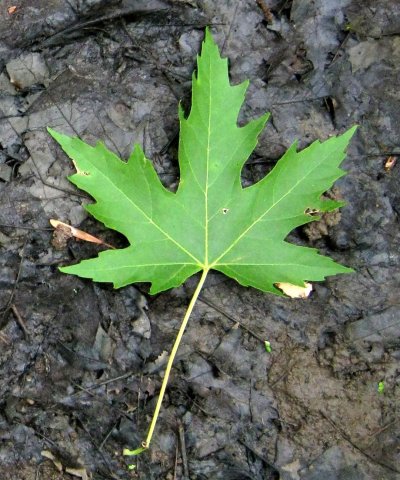
Figure 18. An example of a silver maple (Acer saccharinum) leaf.
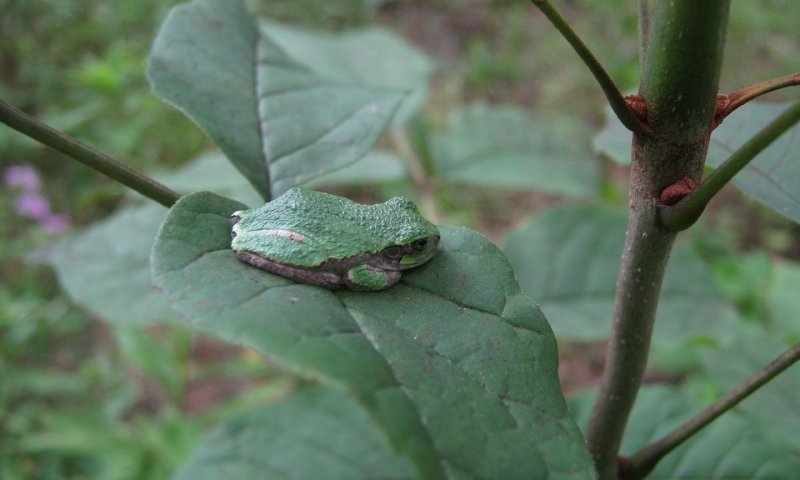
Figure 19. Gray treefrog (ca. Dryophytes versicolor) on a green ash (Fraxinus pennsylvanica) leaf.
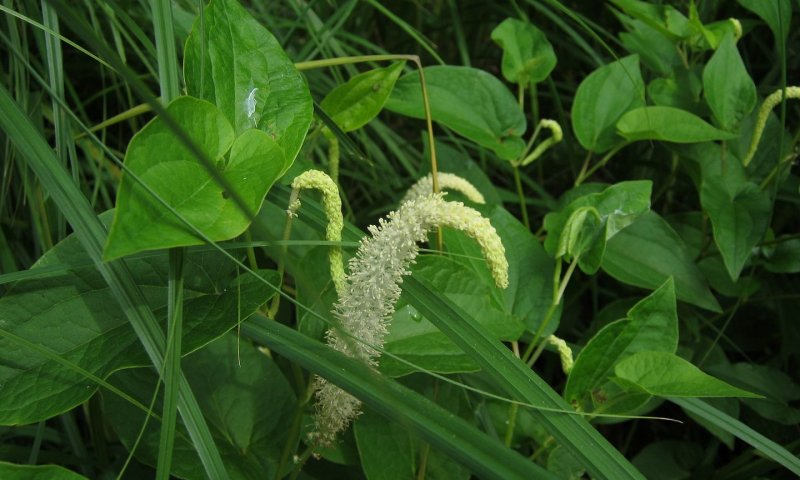
Figure 20. Lizard's tail (Saururus cernuus).
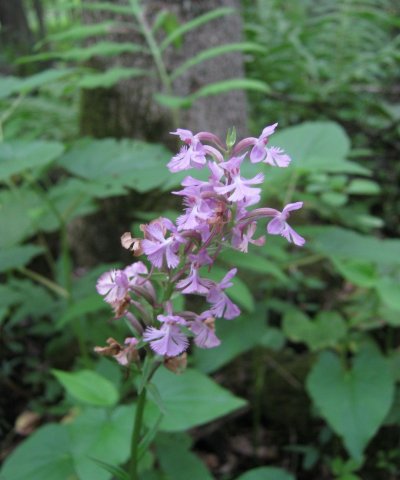
Figure 21. Purple fringed orchid (Platanthera psycodes).
This phase can be relatively fertile, sometimes occurring on sites with a more variable hydrology.
Forest overstory. The overstory is dominated by silver maple (Acer saccharinum) and green ash (Fraxinus pennsylvanica) with a broad assortment of other hardwoods.
Forest understory. Understory vegetation ranges from sparse in ponded areas to dense where the overstory canopy opens up. The species composition is variable, yet in some cases can form monocultures.
Dominant plant species
-
silver maple (Acer saccharinum), tree
-
green ash (Fraxinus pennsylvanica), tree
-
common buttonbush (Cephalanthus occidentalis), shrub
-
smallspike false nettle (Boehmeria cylindrica), other herbaceous
-
lizard's tail (Saururus cernuus), other herbaceous
-
jewelweed (Impatiens capensis), other herbaceous
Table 6. Ground cover
| Tree foliar cover | 40-95% |
|---|---|
| Shrub/vine/liana foliar cover | 1.5-60.0% |
| Grass/grasslike foliar cover | 1-75% |
| Forb foliar cover | 5-45% |
| Non-vascular plants | 0-10% |
| Biological crusts | 0% |
| Litter | 0.2-90.0% |
| Surface fragments >0.25" and <=3" | 0% |
| Surface fragments >3" | 0% |
| Bedrock | 0% |
| Water | 0% |
| Bare ground | 0% |
Table 7. Canopy structure (% cover)
| Height Above Ground (ft) | Tree | Shrub/Vine | Grass/ Grasslike |
Forb |
|---|---|---|---|---|
| <0.5 | 0-15% | 0-5% | 0-1% | 1-30% |
| >0.5 <= 1 | 0-15% | 0-5% | 0-1% | 1-30% |
| >1 <= 2 | 0-15% | 1-60% | 0-2% | 4-45% |
| >2 <= 4.5 | 0-5% | 1-55% | 0-70% | 1-20% |
| >4.5 <= 13 | 2-15% | 1-55% | 0-65% | 0% |
| >13 <= 40 | 40-95% | – | – | – |
| >40 <= 80 | 30-95% | – | – | – |
| >80 <= 120 | – | – | – | – |
| >120 | – | – | – | – |
Community 1.2
Wet Meadow: Carex stricta - Carex spp. Wet Meadow
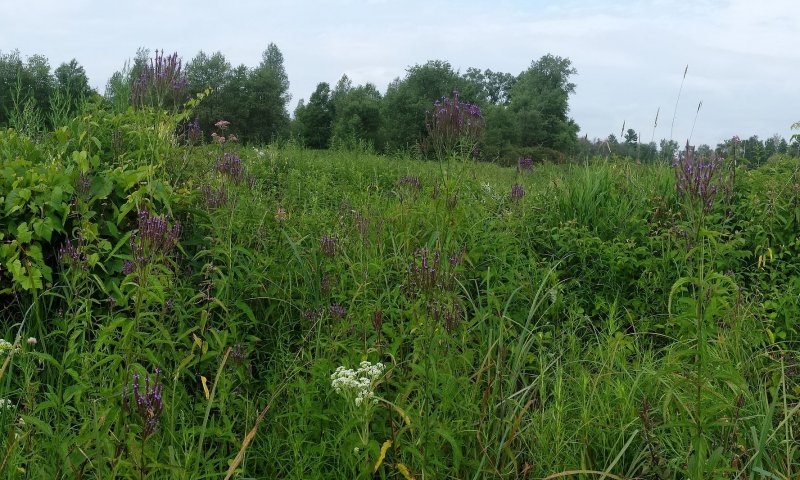
Figure 22. An example of wet meadow vegetation.
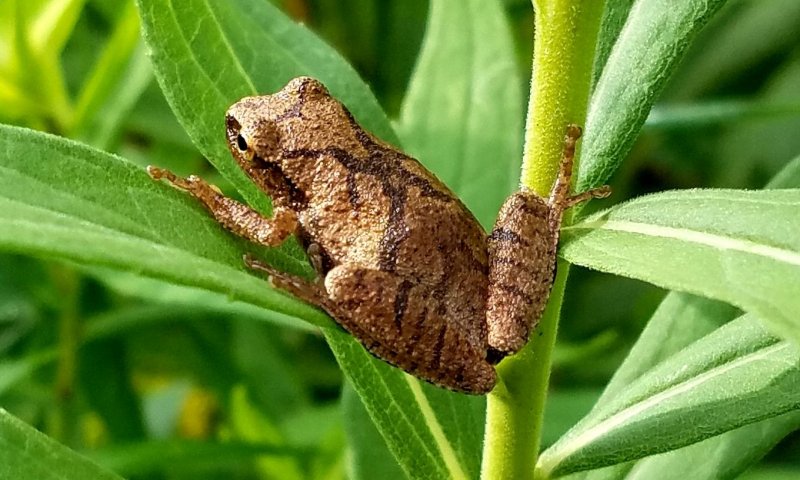
Figure 23. Spring peeper (Pseudacris crucifer).
This phase represents open vegetation that is moderately fertile and has a high diversity of species. It is created through tree and shrub mortality due to beaver activity and is maintained by fire. Fire every ten years or so is required to maintain this phase without tree and shrub encroachment. Larger patches with interiors more distant from potential tree seed sources may persist for greater periods. After about 60 years after disturbance, vegetation succeeds to shrub swamp.
Forest overstory. The overstory has less than 5 percent tree cover.
Forest understory. Understory vegetation is dense and graminoid dominated with various species of grasses, sedges, and forbs.
Dominant plant species
-
upright sedge (Carex stricta), grass
-
bluejoint (Calamagrostis canadensis), grass
-
sensitive fern (Onoclea sensibilis), other herbaceous
-
spotted joe pye weed (Eutrochium maculatum), other herbaceous
Table 8. Ground cover
| Tree foliar cover | 0-5% |
|---|---|
| Shrub/vine/liana foliar cover | 0-15% |
| Grass/grasslike foliar cover | 70-85% |
| Forb foliar cover | 5-20% |
| Non-vascular plants | 0% |
| Biological crusts | 0% |
| Litter | 0% |
| Surface fragments >0.25" and <=3" | 0% |
| Surface fragments >3" | 0% |
| Bedrock | 0% |
| Water | 0% |
| Bare ground | 0% |
Table 9. Canopy structure (% cover)
| Height Above Ground (ft) | Tree | Shrub/Vine | Grass/ Grasslike |
Forb |
|---|---|---|---|---|
| <0.5 | 0-1% | 0-5% | 0-3% | 4-25% |
| >0.5 <= 1 | 0-1% | 0-5% | 0-3% | 4-30% |
| >1 <= 2 | 0-1% | 5-45% | 3-20% | 4-45% |
| >2 <= 4.5 | 0% | 5-55% | 70-90% | 1-30% |
| >4.5 <= 13 | 0% | 5-55% | 0-1% | 0-15% |
| >13 <= 40 | 0-5% | – | – | – |
| >40 <= 80 | 0-5% | – | – | – |
| >80 <= 120 | – | – | – | – |
| >120 | – | – | – | – |
Community 1.3
Shrub-carr: Cornus sericea - Salix spp. - (Rosa palustris) Shrub Swamp
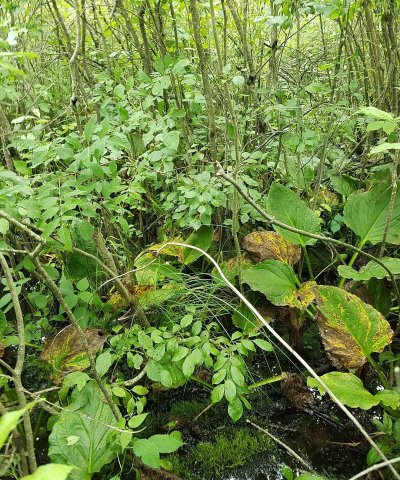
Figure 24. View from of the understory of tall shrub-carr vegetation.
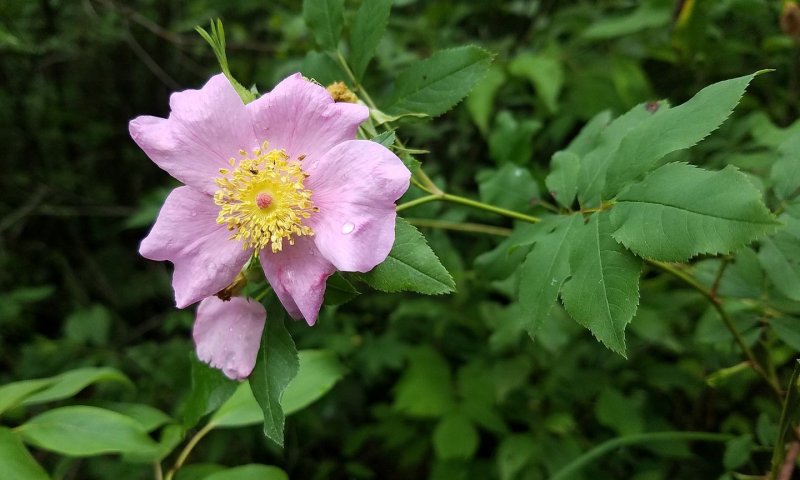
Figure 25. Swamp rose (Rosa palustris).
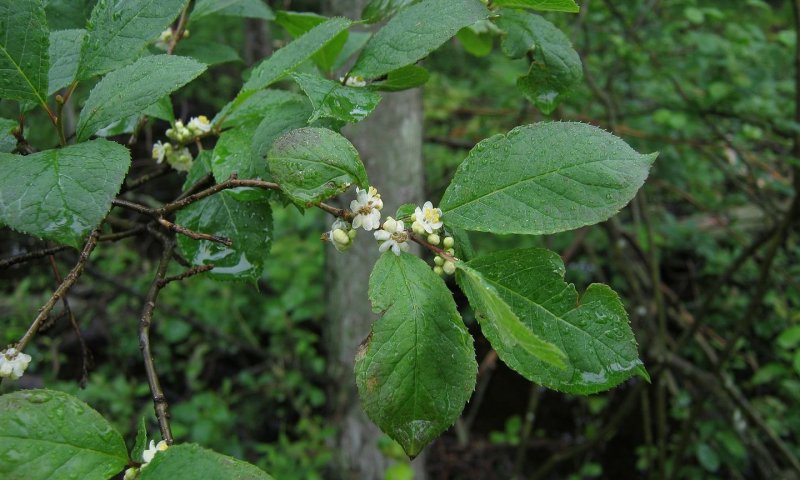
Figure 26. Winterberry (Ilex verticillata).
This phase is dominated by a range of large shrub species that tolerate saturated conditions, but is not frequently inundated. This phase may be intermediate in succession between swamp forest and wet meadow.
Forest overstory. The overstory has less than 5 percent tree cover. Occasionally, speckled alder (Alnus rugosa) may approach tree size, forming thick groves.
Forest understory. Understory vegetation is dense and dominated by shrubs of several species, including redosier dogwood (Cornus sericea), winterberry (Ilex verticellata), and swamp rose (Rosa palustris).
Dominant plant species
-
redosier dogwood (Cornus sericea), shrub
-
swamp rose (Rosa palustris), shrub
-
common winterberry (Ilex verticillata), shrub
-
speckled alder (Alnus incana ssp. rugosa), shrub
Table 10. Canopy structure (% cover)
| Height Above Ground (ft) | Tree | Shrub/Vine | Grass/ Grasslike |
Forb |
|---|---|---|---|---|
| <0.5 | – | – | – | – |
| >0.5 <= 1 | – | – | – | – |
| >1 <= 2 | – | – | 0-50% | 0-50% |
| >2 <= 4.5 | – | 10-95% | – | – |
| >4.5 <= 13 | – | 10-95% | – | – |
| >13 <= 40 | 0-5% | – | – | – |
| >40 <= 80 | 0-5% | – | – | – |
| >80 <= 120 | 0-5% | – | – | – |
| >120 | – | – | – | – |
Community 1.4
Tamarack Swamp: Larix laricina - Acer rubrum / (Rhamnus alnifolia, Vaccinium corymbosum) Swamp Forest
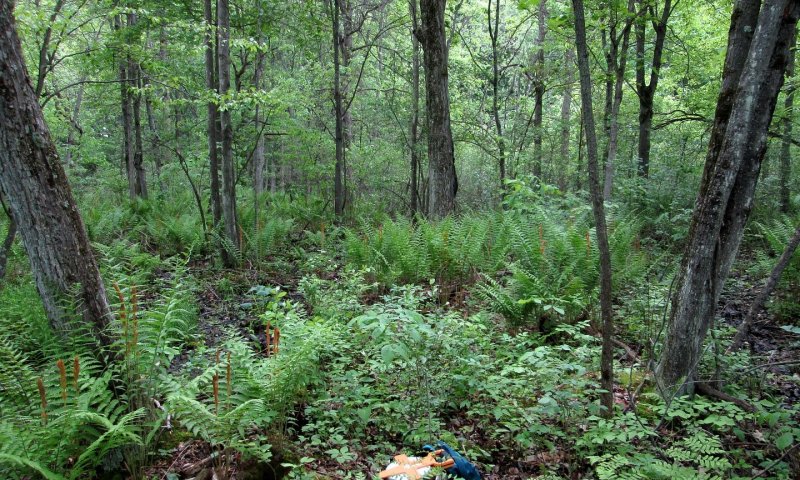
Figure 27. Red maple (Acer rubrum) forest with an understory of cinnamon fern (Osmundastrum cinnamomeum).
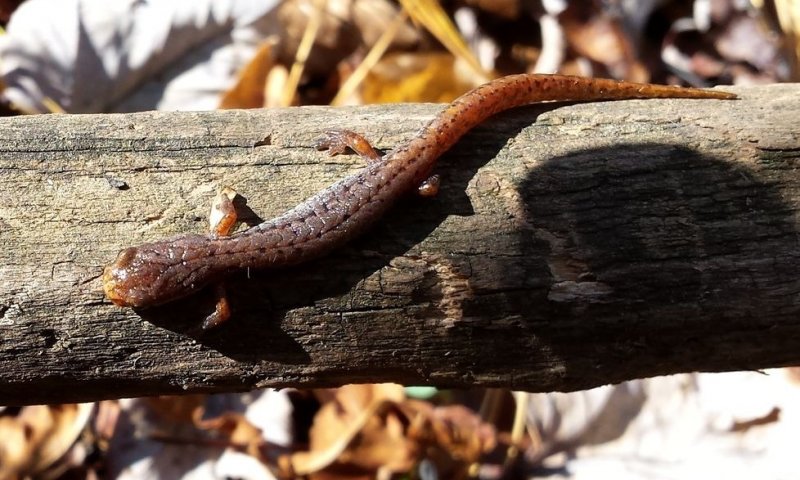
Figure 28. Four-toed salamander (Hemidactylium scutatum).
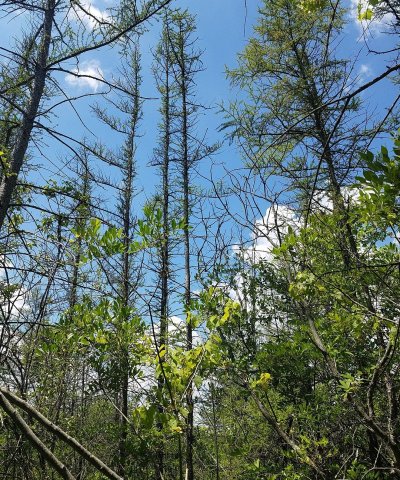
Figure 29. Tamarack (Larix laricina) overstory.
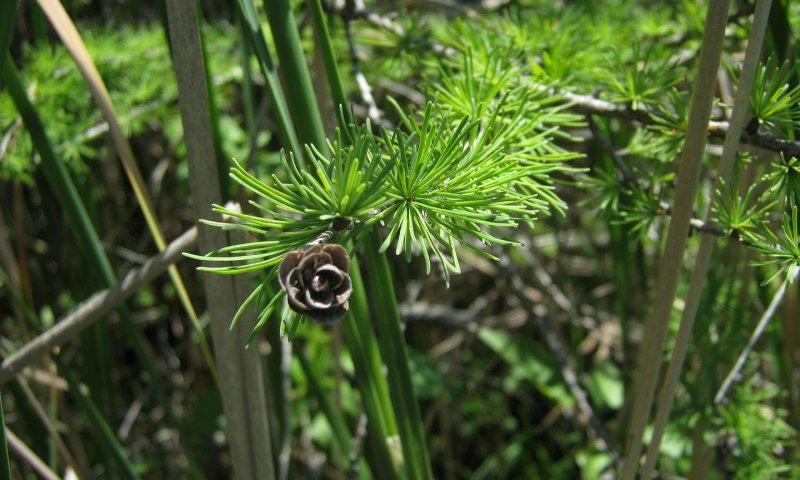
Figure 30. Tamarack (Larix laricina) foliage.
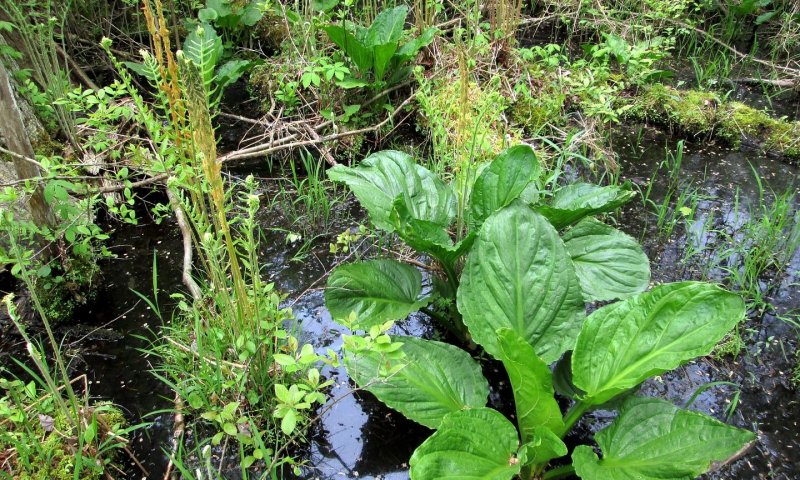
Figure 31. Skunk cabbage (Symplocarpus foetidus).
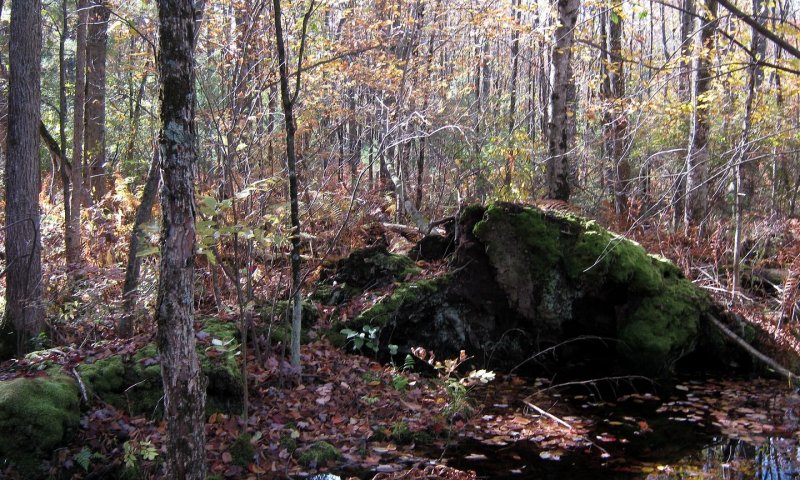
Figure 32. An example of tip-up-mound microtopography.
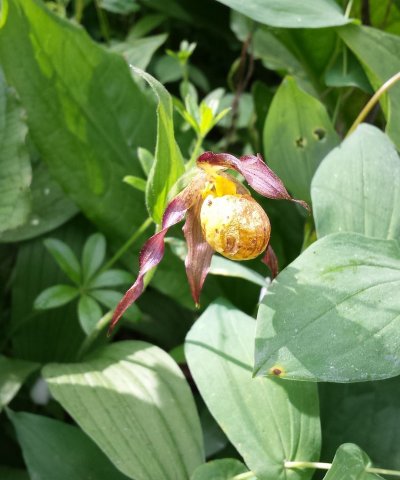
Figure 33. Cypripedium parviflorum var. makasin.
This phase represents a later successional (forested) outcome of a stable saturated hydrology and low fertility.
Forest overstory. The overstory cover can vary from open tamarack (Larix laricina) woodland to red maple (Acer rubrum) forest. Areas to the north may have large patches dominated by relict northern white cedar (Thuja occidentalis).
Forest understory. Understory vegetation is variable and can consist of shade-tolerant species like skunk cabbage (Symplocarpus foetidus) similar to the hardwood swamp phase or some species components of the shrub-carr (e.g., winterberry) and fen phases.
Dominant plant species
-
red maple (Acer rubrum), tree
-
tamarack (Larix laricina), tree
-
common winterberry (Ilex verticillata), shrub
-
highbush blueberry (Vaccinium corymbosum), shrub
-
poison sumac (Toxicodendron vernix), shrub
-
skunk cabbage (Symplocarpus foetidus), other herbaceous
-
cinnamon fern (Osmunda cinnamomea), other herbaceous
Table 11. Ground cover
| Tree foliar cover | 15-60% |
|---|---|
| Shrub/vine/liana foliar cover | 10-45% |
| Grass/grasslike foliar cover | 3-30% |
| Forb foliar cover | 25-55% |
| Non-vascular plants | 5-40% |
| Biological crusts | 0% |
| Litter | 0-30% |
| Surface fragments >0.25" and <=3" | 0% |
| Surface fragments >3" | 0% |
| Bedrock | 0% |
| Water | 0-60% |
| Bare ground | 0% |
Table 12. Woody ground cover
| Downed wood, fine-small (<0.40" diameter; 1-hour fuels) | – |
|---|---|
| Downed wood, fine-medium (0.40-0.99" diameter; 10-hour fuels) | – |
| Downed wood, fine-large (1.00-2.99" diameter; 100-hour fuels) | 0-1% |
| Downed wood, coarse-small (3.00-8.99" diameter; 1,000-hour fuels) | 0-0% |
| Downed wood, coarse-large (>9.00" diameter; 10,000-hour fuels) | 0-1% |
| Tree snags** (hard***) | – |
| Tree snags** (soft***) | – |
| Tree snag count** (hard***) | 0 per acre |
| Tree snag count** (hard***) | 0 per acre |
* Decomposition Classes: N - no or little integration with the soil surface; I - partial to nearly full integration with the soil surface.
** >10.16cm diameter at 1.3716m above ground and >1.8288m height--if less diameter OR height use applicable down wood type; for pinyon and juniper, use 0.3048m above ground.
*** Hard - tree is dead with most or all of bark intact; Soft - most of bark has sloughed off.
Table 13. Canopy structure (% cover)
| Height Above Ground (ft) | Tree | Shrub/Vine | Grass/ Grasslike |
Forb |
|---|---|---|---|---|
| <0.5 | 0-2% | 2-5% | 0-2% | 15-45% |
| >0.5 <= 1 | 0-2% | 1-4% | 0-2% | 15-45% |
| >1 <= 2 | 0-2% | 10-45% | 2-5% | 25-50% |
| >2 <= 4.5 | 2-20% | 10-45% | 1-30% | 4-10% |
| >4.5 <= 13 | 20-45% | 10-40% | 0-4% | – |
| >13 <= 40 | 15-60% | – | – | – |
| >40 <= 80 | 1-20% | – | – | – |
| >80 <= 120 | – | – | – | – |
| >120 | – | – | – | – |
Community 1.5
Fen: Dasiphora fruticosa ssp. floribunda / Carex sterilis - Andropogon gerardi - Arnoglossum plantagineum Fen
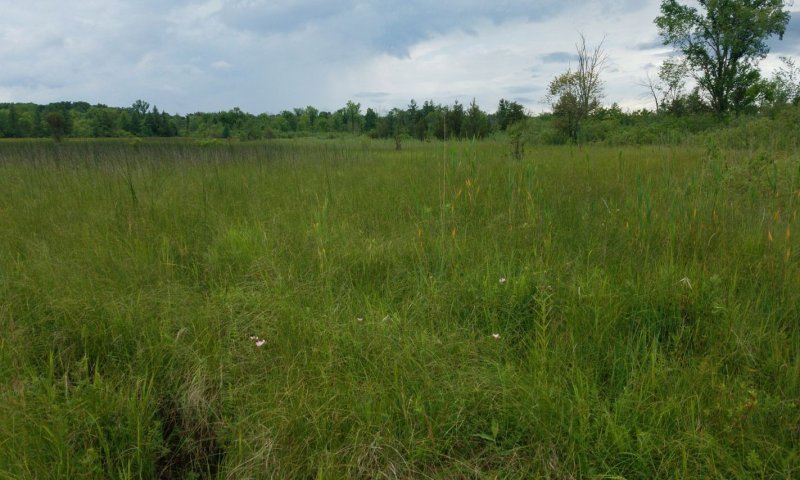
Figure 34. Fen vegetation occurring where marl approaches within 20 cm of the soil surface.
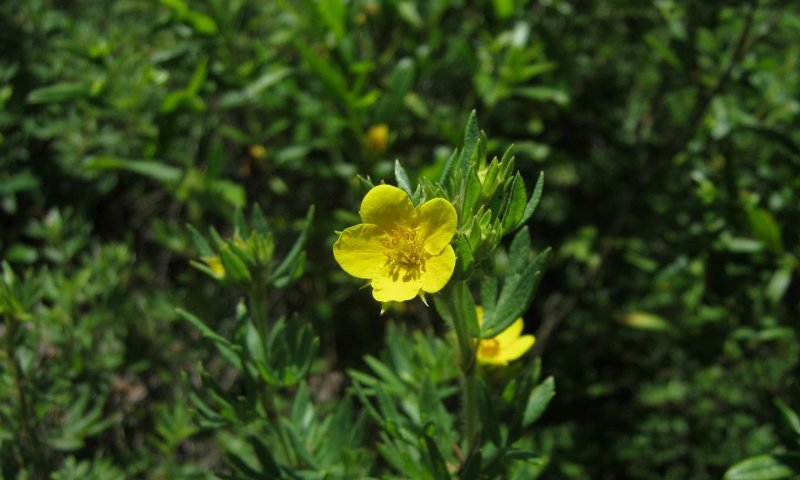
Figure 35. Shrubby cinquefoil (Dasiphora frutescens).
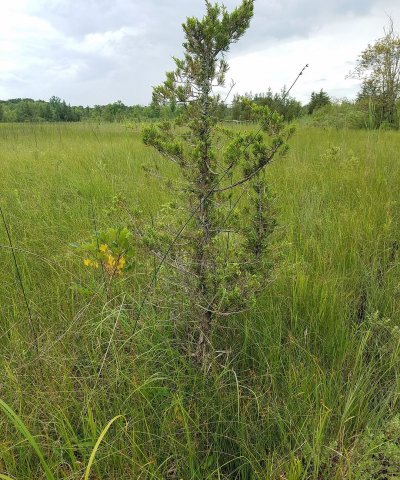
Figure 36. Eastern redcedar (Juniperus virginiana).
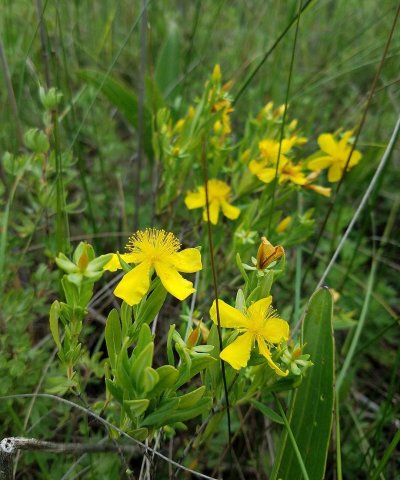
Figure 37. Kalm's St. Johnswort (Hypericum kalmianum).

Figure 38. Angelica atropurpurea.
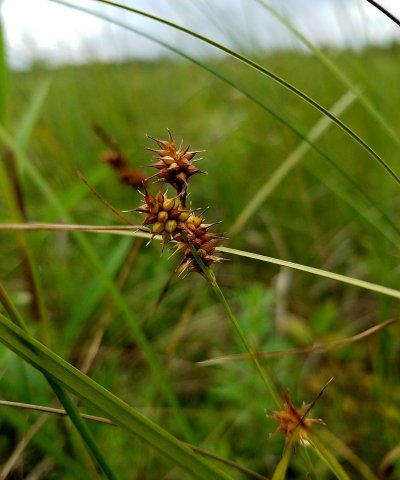
Figure 39. Carex flava.

Figure 40. Cacalia (Arnoglossum plantagineum).
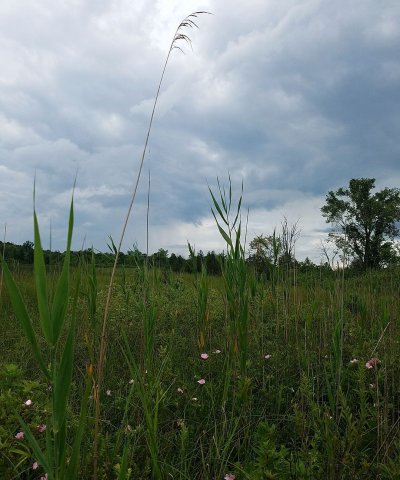
Figure 41. Native reed grass (Phragmites australis ssp. americanus).
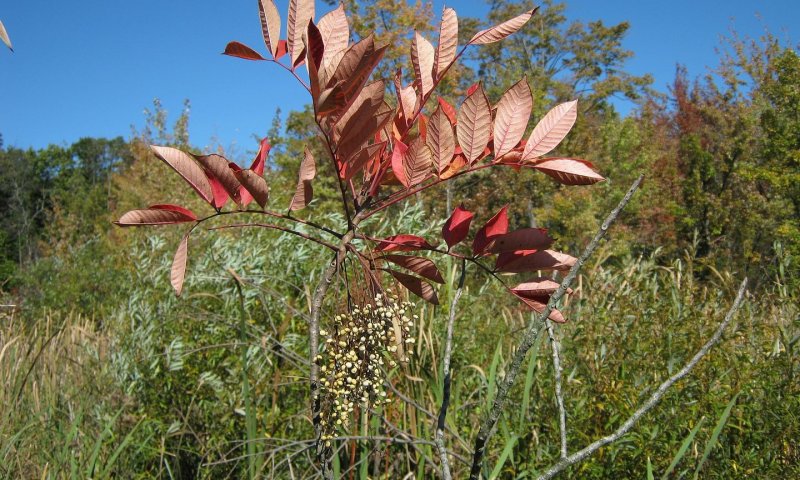
Figure 42. Poison sumac (Toxicodendron vernix).
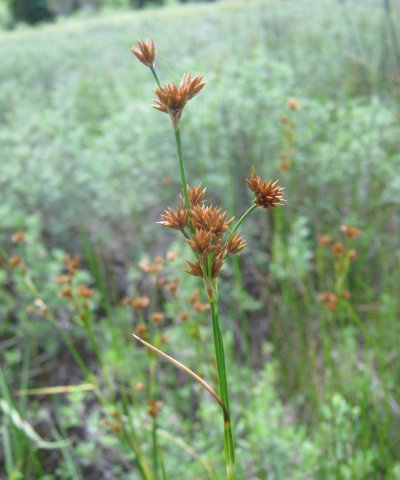
Figure 43. Twig-rush (Cladium mariscoides).
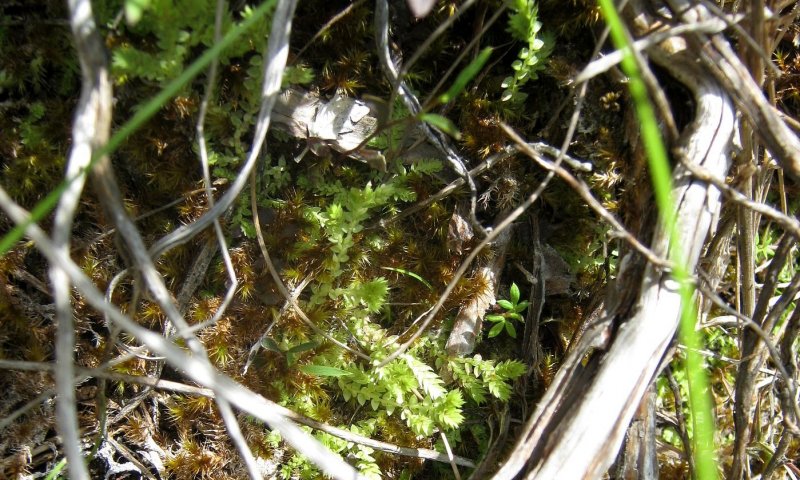
Figure 44. Selaginella eclipes.
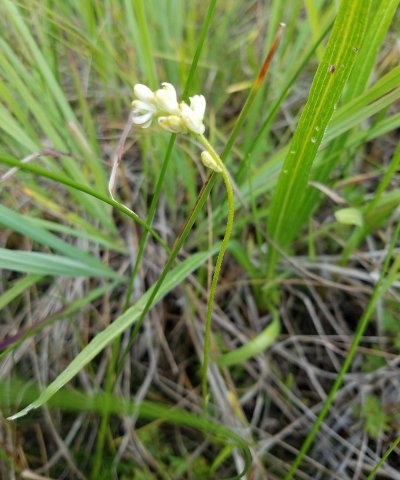
Figure 45. Triantha glutinosa.
This phase represents open conditions with a stable calcareous hydrology or exposed marl. Species composition and low stature strongly reflect the low nutrient availability.
Forest overstory. Overstory is mostly treeless, but scattered tamarack (Larix laricina) may approach 5 percent cover. Poison sumac (Toxicodendron vernix) occasionally approaches tree size.
Forest understory. Understory consists of dwarf shrubs like shrubby cinquefoil (Dasiphora fruticosa) and Kalm’s St. John’swort (Hypericum kalmianum), and graminoids like twigrush (Cladium mariscoides), wooly sedge (Carex pellita), and yellow sedge (Carex flava). Many of the species are calciphiles (calcium indicators). The wax-myrtle (Morella pensylvanica) is a locally rare nitrogen-fixing shrub found in the margins of large fens.
Dominant plant species
-
shrubby cinquefoil (Dasiphora fruticosa), shrub
-
woollyfruit sedge (Carex lasiocarpa), grass
-
smooth sawgrass (Cladium mariscoides), grass
Table 14. Ground cover
| Tree foliar cover | 0% |
|---|---|
| Shrub/vine/liana foliar cover | 5-55% |
| Grass/grasslike foliar cover | 30-80% |
| Forb foliar cover | 10-50% |
| Non-vascular plants | 35-45% |
| Biological crusts | 0% |
| Litter | 0% |
| Surface fragments >0.25" and <=3" | 0% |
| Surface fragments >3" | 0% |
| Bedrock | 0% |
| Water | 0-15% |
| Bare ground | 0% |
Table 15. Canopy structure (% cover)
| Height Above Ground (ft) | Tree | Shrub/Vine | Grass/ Grasslike |
Forb |
|---|---|---|---|---|
| <0.5 | 0-1% | 2-40% | 4-10% | 0-35% |
| >0.5 <= 1 | 0-1% | 2-40% | 5-30% | 1-3% |
| >1 <= 2 | 0-1% | 5-55% | 25-80% | 2-10% |
| >2 <= 4.5 | 0-2% | 1-3% | 5-80% | 3-45% |
| >4.5 <= 13 | 0-2% | 1-3% | 0-3% | 0-2% |
| >13 <= 40 | – | – | – | – |
| >40 <= 80 | – | – | – | – |
| >80 <= 120 | – | – | – | – |
| >120 | – | – | – | – |
Community 1.6
Emergent Marsh: Schoenoplectus tabernaemontani - Typha spp. - (Sparganium spp., Juncus spp.) Marsh
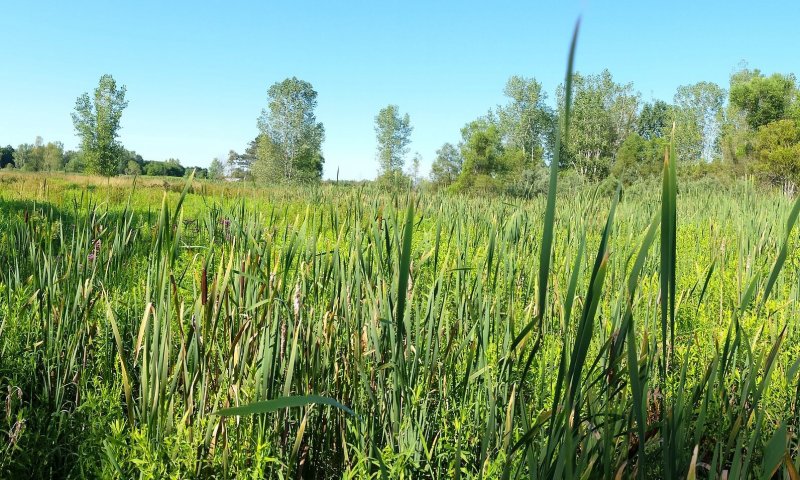
Figure 46. Marsh community phase occurring where water table remains above the soil surface for much of the growing season.
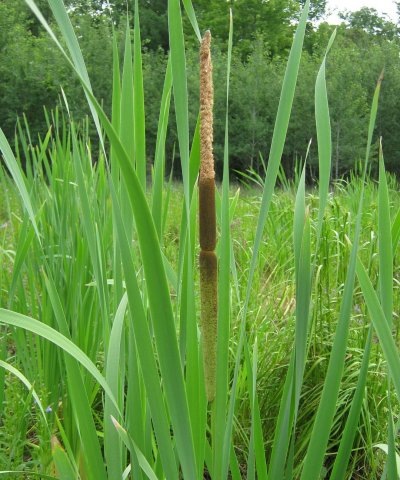
Figure 47. Native cattail (Typha latifolia).
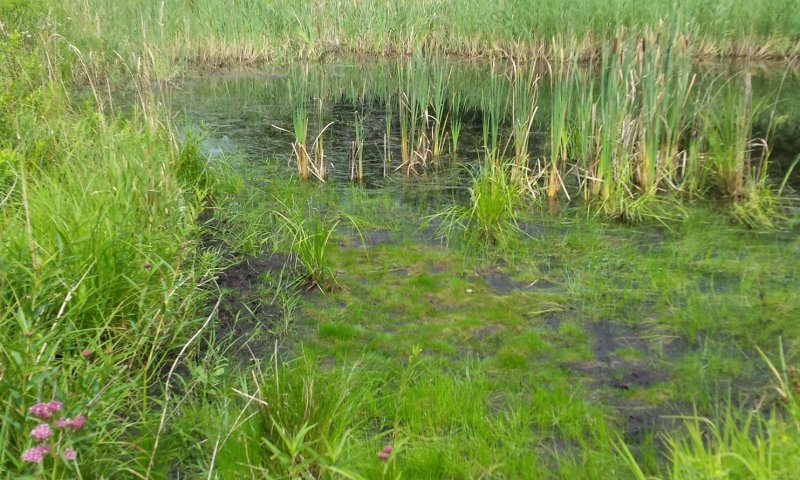
Figure 48. Marsh with a ponded swale.
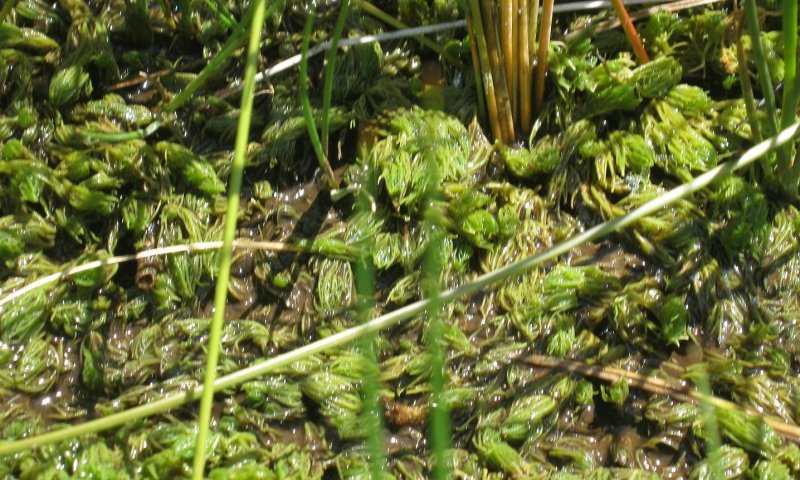
Figure 49. Chara, a marl-forming green alga.
This phase represents the open condition with shallow (approximately 15 cm) standing water.
Forest overstory. There is no tree cover in this phase.
Forest understory. Understory consists of emergent graminoids like cattails (Typha latifolia) and bulrushes (Schoenoplectus spp.), and a mix of marsh forbs. There is often a submergent substratum of aquatic plants and algae (e.g., Chara sp.).
Dominant plant species
-
broadleaf cattail (Typha latifolia), grass
-
softstem bulrush (Schoenoplectus tabernaemontani), grass
-
swamp milkweed (Asclepias incarnata), other herbaceous
-
eastern marsh fern (Thelypteris palustris), other herbaceous
Table 16. Ground cover
| Tree foliar cover | 0-10% |
|---|---|
| Shrub/vine/liana foliar cover | 0-25% |
| Grass/grasslike foliar cover | 45-95% |
| Forb foliar cover | 1.5-15.0% |
| Non-vascular plants | 0-4% |
| Biological crusts | 0% |
| Litter | 0% |
| Surface fragments >0.25" and <=3" | 0% |
| Surface fragments >3" | 0% |
| Bedrock | 0% |
| Water | 50-100% |
| Bare ground | 0% |
Table 17. Canopy structure (% cover)
| Height Above Ground (ft) | Tree | Shrub/Vine | Grass/ Grasslike |
Forb |
|---|---|---|---|---|
| <0.5 | 0% | 0-5% | 1-45% | 2-15% |
| >0.5 <= 1 | 0% | 0-5% | 1-45% | 2-15% |
| >1 <= 2 | 0% | 0-20% | 1-45% | 2-15% |
| >2 <= 4.5 | 0-1% | 0-15% | 4-95% | 0% |
| >4.5 <= 13 | 0-1% | 0-15% | 1-2% | – |
| >13 <= 40 | 0-5% | – | – | – |
| >40 <= 80 | 0-5% | – | – | – |
| >80 <= 120 | – | – | – | – |
| >120 | – | – | – | – |
Community 1.7
Inundated Shrub Swamp: Cephalanthus occidentalis / Carex spp. Northern Shrub Swamp
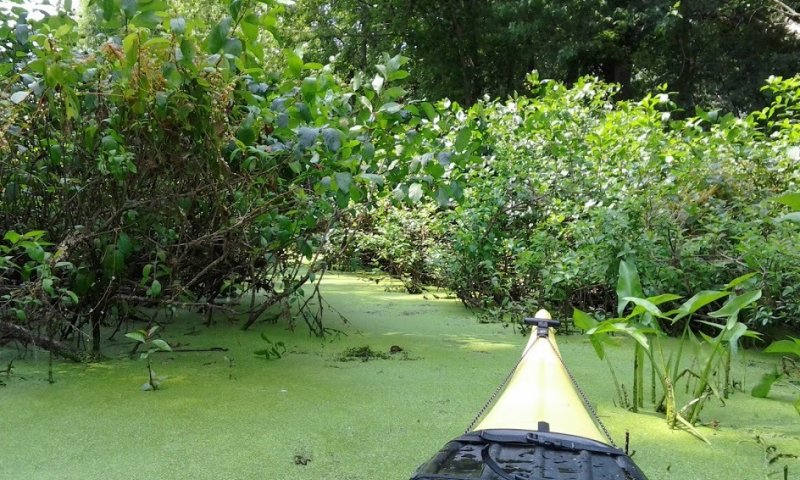
Figure 50. Buttonbush (Cephalanthus occidentalis) and duckweed (Lemna spp.).
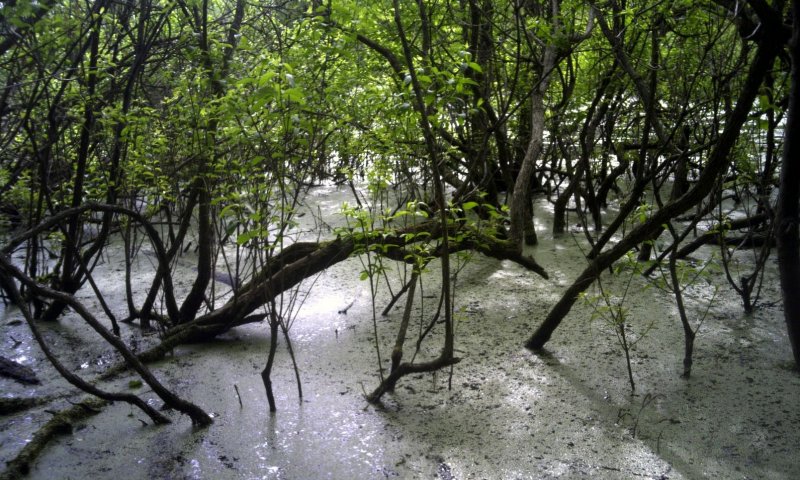
Figure 51. Buttonbush (Cephalanthus occidentalis).
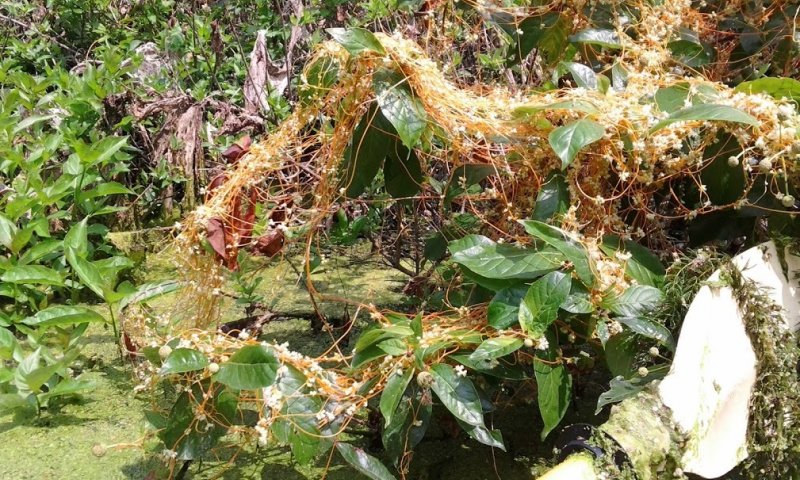
Figure 52. Buttonbush (Cephalanthus occidentalis) with parasitic dodder vine (Cuscuta gronovii).
This phase represents the shrubby phase with shallow standing water. This shrubby often occurs on the nutrient rich edges of a wetland where the muck is more decomposed, and the substrate becomes submerged (no hummocks to stand on).
Forest overstory. There is less than 5% tree cover associated with this phase, generally of species related to other vegetation phases or is shade from adjacent upland vegetation. Trees rooted within this zone are most likely willows (Salix spp.) that can tolerate longer hydroperiods.
Forest understory. Understory consists of emergent shrubs, mainly buttonbush (Cephalanthus occidentalis).
Dominant plant species
-
common buttonbush (Cephalanthus occidentalis), shrub
Table 18. Canopy structure (% cover)
| Height Above Ground (ft) | Tree | Shrub/Vine | Grass/ Grasslike |
Forb |
|---|---|---|---|---|
| <0.5 | – | – | – | – |
| >0.5 <= 1 | – | – | – | – |
| >1 <= 2 | – | – | – | – |
| >2 <= 4.5 | – | 10-80% | – | – |
| >4.5 <= 13 | – | 10-80% | – | – |
| >13 <= 40 | – | – | – | – |
| >40 <= 80 | – | – | – | – |
| >80 <= 120 | – | – | – | – |
| >120 | – | – | – | – |
Pathway 1.1A
Community 1.1 to 1.2


Temporary prolonged inundation or fire
Conservation practices
| Prescribed Burning |
|---|
Pathway 1.1B
Community 1.1 to 1.3


Clearcut, blowdown, or fire
Conservation practices
| Prescribed Burning | |
|---|---|
| Early Successional Habitat Development/Management | |
| Forest Stand Improvement |
Pathway 1.1C
Community 1.1 to 1.4


Increased peat or marl thickness, and decreased nitrogen or phosphorus availability
Pathway 1.2A
Community 1.2 to 1.1


Succession
Conservation practices
| Tree/Shrub Site Preparation | |
|---|---|
| Tree/Shrub Establishment |
Pathway 1.2B
Community 1.2 to 1.3


Succession
Conservation practices
| Tree/Shrub Site Preparation | |
|---|---|
| Tree/Shrub Establishment |
Pathway 1.2C
Community 1.2 to 1.5


Increased peat or marl thickness, and decreased nitrogen or phosphorus availability
Pathway 1.2D
Community 1.2 to 1.6


Permanent inundation
Pathway 1.2E
Community 1.2 to 1.7


Permanent inundation
Pathway 1.3A
Community 1.3 to 1.1


Succession
Conservation practices
| Tree/Shrub Site Preparation | |
|---|---|
| Tree/Shrub Establishment |
Pathway 1.3B
Community 1.3 to 1.2


Temporary prolonged inundation or fire
Conservation practices
| Prescribed Burning |
|---|
Pathway 1.3C
Community 1.3 to 1.6


Permanent inundation
Pathway 1.3D
Community 1.3 to 1.7


Permanent inundation
Pathway 1.4A
Community 1.4 to 1.1


Decreased peat or marl thickness, and increased nitrogen or phosphorus availability
Pathway 1.4B
Community 1.4 to 1.5


Clearcut, blowdown, or fire
Conservation practices
| Prescribed Burning | |
|---|---|
| Early Successional Habitat Development/Management | |
| Forest Stand Improvement |
Pathway 1.5A
Community 1.5 to 1.2


Decreased peat or marl thickness, and increased nitrogen or phosphorus availability
Pathway 1.5B
Community 1.5 to 1.4


Succession
Conservation practices
| Tree/Shrub Site Preparation | |
|---|---|
| Tree/Shrub Establishment |
Pathway 1.5C
Community 1.5 to 1.6


Permanent inundation
Pathway 1.6A
Community 1.6 to 1.2


Lower water table
Pathway 1.6B
Community 1.6 to 1.5


Lower water table
Pathway 1.6C
Community 1.6 to 1.7


Temporary drop in water table with shrub establishment
Conservation practices
| Tree/Shrub Site Preparation | |
|---|---|
| Tree/Shrub Establishment |
Pathway 1.7A
Community 1.7 to 1.2


Lower water table, and fire
Conservation practices
| Prescribed Burning |
|---|
Pathway 1.7B
Community 1.7 to 1.3


Lower water table
Pathway 1.7C
Community 1.7 to 1.6


Temporary drought and fire with shrub mortality
Conservation practices
| Brush Management | |
|---|---|
| Prescribed Burning |
State 2
Cultural State
The cultural state is actively managed. The structure and composition of cultural vegetation is not self-sustaining without human inputs.
Community 2.1
Sustainable Crop, Pasture, or Plantation
The community phase is an undifferentiated placeholder representing any of a number of possible crops or other intensive land uses in which best available management practices are employed to ensure that a minimum amount of soil erosion and water pollution occurs.
Community 2.2
Unsustainable Cultural Phase
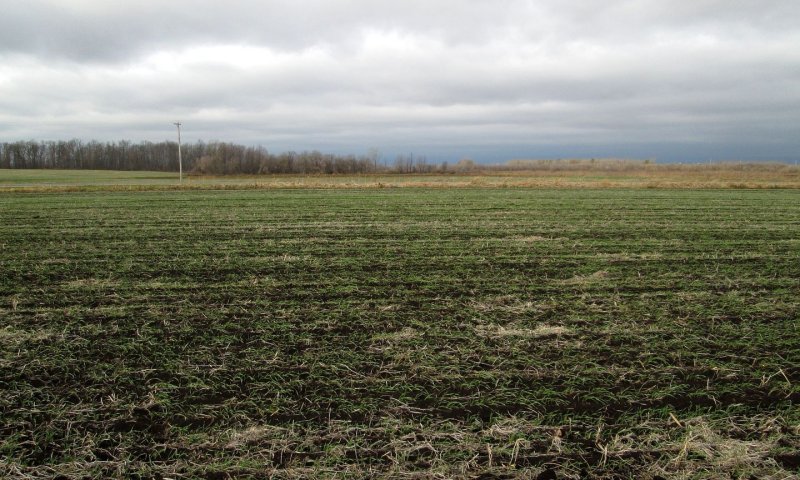
Figure 53. An example of a drained agricultural field in an organic soil.
The community phase is an undifferentiated placeholder representing any of a number of possible crops or other intensive land uses in which poor management practices are employed, resulting in an unacceptable amount of soil erosion and water pollution.
Community 2.3
Conservation Feature
The community phase represents non-crop vegetation that is managed in association with cropland or other intensive land uses to reduce environmental impacts of the land use. The managed vegetation can be a grassed waterway, conservation reserve, a small patch pollinator garden, or other land taken out of crop production. The small size and adjacency to an intensive land uses limits the degree to which native biological community and associated ecosystem services can be restored, but in a landscape context it may provide buffers or connectivity with nearby wild ecosystems.
Pathway 2.1A
Community 2.1 to 2.2
Revert to unsustainable cultural practices
Pathway 2.1B
Community 2.1 to 2.3
Establish conservation feature
Conservation practices
| Conservation Cover | |
|---|---|
| Grassed Waterway |
Pathway 2.2A
Community 2.2 to 2.1
Implement sustainable cultural practices
Conservation practices
| Conservation Crop Rotation | |
|---|---|
| Cover Crop | |
| Nutrient Management | |
| Integrated Pest Management (IPM) |
Pathway 2.2B
Community 2.2 to 2.3
Establish conservation feature
Conservation practices
| Conservation Cover | |
|---|---|
| Grassed Waterway |
Pathway 2.3A
Community 2.3 to 2.1
Implement sustainable cultural practices
Conservation practices
| Conservation Crop Rotation | |
|---|---|
| Cover Crop | |
| Nutrient Management | |
| Integrated Pest Management (IPM) |
Pathway 2.3B
Community 2.3 to 2.2
Revert to unsustainable cultural practices
State 3
Seminatural Drained State
The Seminatural Drained State is modified from reference conditions by draining the site, often followed by temporary cultivation of the site. The vegetation is spontaneously self-generated or self-sustaining in response to both human and natural drivers. However, species composition may no longer indicate wetland definitions, and may consist of a mix of native and introduced species. The degree of isolation from intact habitat and the degree of disturbance will dictate the species composition as vegetation recovers.
Community 3.1
Ruderal Drained Meadow & Shrub
This phase represents an undifferentiated open community with few trees, with a variable native and non-native species composition.
Dominant plant species
-
multiflora rose (Rosa multiflora), shrub
-
reed canarygrass (Phalaris arundinacea), grass
-
eastern woodland sedge (Carex blanda), grass
-
rice cutgrass (Leersia oryzoides), grass
Community 3.2
Semi-Natural Drained Swamp Forest
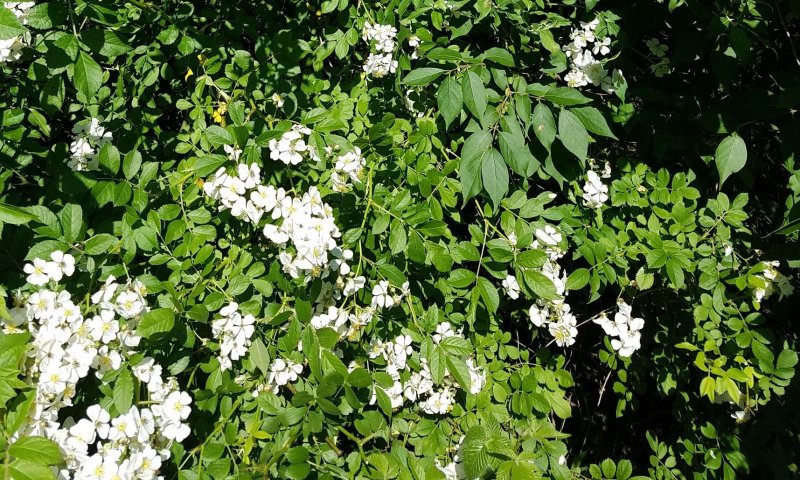
Figure 54. Multiflora rose (Rosa palustris), an invasive species.
This phase represents an undifferentiated forested community, with a variable native and non-native species composition.
Dominant plant species
-
American elm (Ulmus americana), tree
-
red maple (Acer rubrum), tree
-
American basswood (Tilia americana), tree
-
Virginia creeper (Parthenocissus quinquefolia), shrub
-
multiflora rose (Rosa multiflora), shrub
-
northern spicebush (Lindera benzoin), shrub
-
eastern bottlebrush grass (Elymus hystrix), grass
-
Canadian clearweed (Pilea pumila), other herbaceous
-
great ragweed (Ambrosia trifida), other herbaceous
-
jumpseed (Polygonum virginianum), other herbaceous
Table 19. Ground cover
| Tree foliar cover | 55-95% |
|---|---|
| Shrub/vine/liana foliar cover | 10-55% |
| Grass/grasslike foliar cover | 2-25% |
| Forb foliar cover | 10-80% |
| Non-vascular plants | 0-2% |
| Biological crusts | 0% |
| Litter | 25-50% |
| Surface fragments >0.25" and <=3" | 0% |
| Surface fragments >3" | 0% |
| Bedrock | 0% |
| Water | 0% |
| Bare ground | 0% |
Table 20. Canopy structure (% cover)
| Height Above Ground (ft) | Tree | Shrub/Vine | Grass/ Grasslike |
Forb |
|---|---|---|---|---|
| <0.5 | 0-3% | 1-25% | 0-15% | 5-75% |
| >0.5 <= 1 | 0-3% | 1-25% | 0-15% | 5-75% |
| >1 <= 2 | 0-3% | 10-50% | 0-15% | 10-90% |
| >2 <= 4.5 | 0-5% | 5-30% | 0-3% | 1-40% |
| >4.5 <= 13 | 20-75% | 5-35% | – | 0-20% |
| >13 <= 40 | 55-95% | 0-5% | – | – |
| >40 <= 80 | 20-80% | 0-1% | – | – |
| >80 <= 120 | – | – | – | – |
| >120 | – | – | – | – |
Pathway 3.1A
Community 3.1 to 3.2
Succession
Pathway 3.2A
Community 3.2 to 3.1
Blowdown or clearcut
Conservation practices
| Early Successional Habitat Development/Management | |
|---|---|
| Forest Stand Improvement |
State 4
Seminatural State
The Seminatural State is modified from reference conditions mainly in species composition due to some type of disturbance, but retains a wetland hydrology. The state might have been drained and under cultivation for a time, but subsequently, hydrology is at least partially restored. The vegetation is spontaneously self-generated or self-sustaining in response to both human and natural drivers. However, species composition consists of a mix of native and introduced species. The degree of isolation from intact habitat and the degree of disturbance will dictate the species composition as vegetation recovers.
Community 4.1
Ruderal Wet Meadow & Shrub Swamp: Phalaris arundinacea Eastern Ruderal Marsh
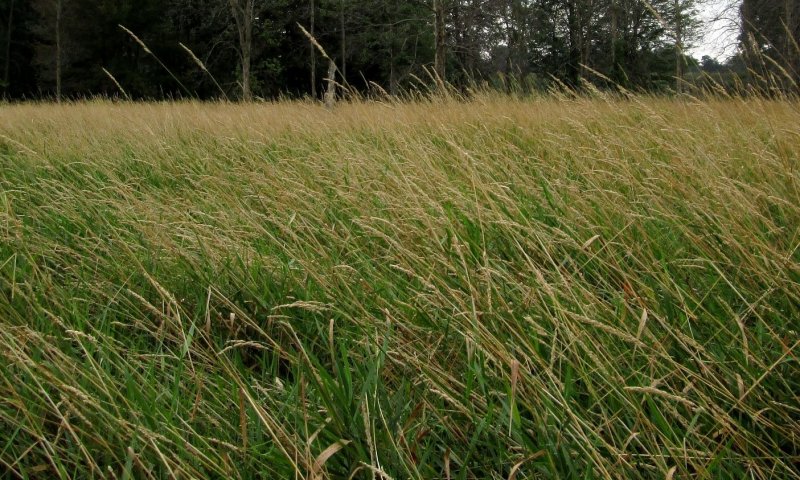
Figure 55. Reed canarygrass (Phalaris arundinacea), an invasive species with native and non-native genotypes.

Figure 56. Invasive reed grass (Phragmites australis ssp. australis).
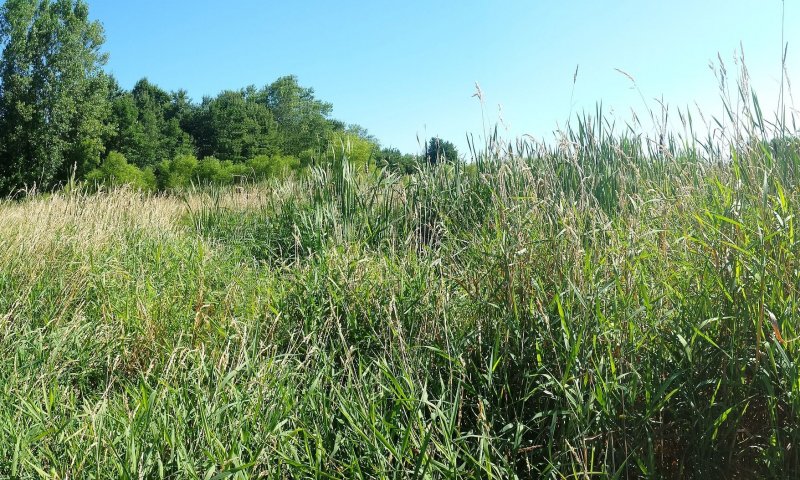
Figure 57. Reed canarygrass (Phalaris arundinacea), an invasive species with native and non-native genotypes.
This phase represents an undifferentiated open community with few trees, with a variable native and non-native species composition.
Dominant plant species
-
reed canarygrass (Phalaris arundinacea), grass
-
rice cutgrass (Leersia oryzoides), grass
Table 21. Ground cover
| Tree foliar cover | 0-3% |
|---|---|
| Shrub/vine/liana foliar cover | 0.1-10.0% |
| Grass/grasslike foliar cover | 40-100% |
| Forb foliar cover | 1-50% |
| Non-vascular plants | 0% |
| Biological crusts | 0% |
| Litter | 35-45% |
| Surface fragments >0.25" and <=3" | 0% |
| Surface fragments >3" | 0% |
| Bedrock | 0% |
| Water | 0-5% |
| Bare ground | 0% |
Table 22. Canopy structure (% cover)
| Height Above Ground (ft) | Tree | Shrub/Vine | Grass/ Grasslike |
Forb |
|---|---|---|---|---|
| <0.5 | 0% | 0% | 0% | 0-40% |
| >0.5 <= 1 | 0% | 0% | 0-1% | 0-35% |
| >1 <= 2 | 0% | 0-5% | 0-4% | 1-40% |
| >2 <= 4.5 | 0% | 0-5% | 40-100% | 0-10% |
| >4.5 <= 13 | 0-1% | 0-5% | 5-100% | 0-4% |
| >13 <= 40 | – | 0-5% | – | – |
| >40 <= 80 | – | – | – | – |
| >80 <= 120 | – | – | – | – |
| >120 | – | – | – | – |
Community 4.2
Exotic Ruderal Swamp Forest: Acer negundo Ruderal Floodplain Forest
This phase represents an undifferentiated forested community, with a variable native and non-native species composition.
Dominant plant species
-
boxelder (Acer negundo), tree
-
eastern cottonwood (Populus deltoides), tree
Pathway 4.1A
Community 4.1 to 4.2
Succession
Pathway 4.2A
Community 4.2 to 4.1
Blowdown or clearcut
Conservation practices
| Early Successional Habitat Development/Management | |
|---|---|
| Forest Stand Improvement |
Transition T1A
State 1 to 2
Drained, cleared vegetation, then cultivated domesticated species
Transition T1B
State 1 to 3
Drained, cleared vegetation, then invasive species introduced
Transition T1C
State 1 to 4
Cleared vegetation, then invasive species introduced
Restoration pathway R2
State 2 to 1
Restored hydrology, removed domesticated species, and restored native species
Conservation practices
| Brush Management | |
|---|---|
| Restoration and Management of Rare and Declining Habitats | |
| Wetland Wildlife Habitat Management | |
| Wetland Restoration | |
| Herbaceous Weed Control |
Transition T2A
State 2 to 3
Abandoned, then succession
Transition T2B
State 2 to 4
Restored hydrology, controlled invasive species, then restored native species
Conservation practices
| Wetland Restoration |
|---|
Restoration pathway R3
State 3 to 1
Restored hydrology, controlled invasive species, then restored native species
Conservation practices
| Brush Management | |
|---|---|
| Restoration and Management of Rare and Declining Habitats | |
| Wetland Wildlife Habitat Management | |
| Wetland Restoration | |
| Herbaceous Weed Control |
Transition T3A
State 3 to 2
Cleared vegetation, then cultivated domesticated species
Transition T3B
State 3 to 4
Restored hydrology
Conservation practices
| Wetland Restoration |
|---|
Restoration pathway R4
State 4 to 1
Controlled invasive species, then restored native species
Conservation practices
| Brush Management | |
|---|---|
| Restoration and Management of Rare and Declining Habitats | |
| Wetland Wildlife Habitat Management | |
| Herbaceous Weed Control |
Transition T4A
State 4 to 2
Drained, cleared vegetation, then cultivated domesticated species
Transition T4B
State 4 to 3
Drained
Additional community tables
Table 23. Community 1.1 forest overstory composition
| Common name | Symbol | Scientific name | Nativity | Height (ft) | Canopy cover (%) | Diameter (in) | Basal area (square ft/acre) |
|---|---|---|---|---|---|---|---|
|
Tree
|
|||||||
| silver maple | ACSA2 | Acer saccharinum | Native | 32.8–82 | 5–95 | – | – |
| green ash | FRPE | Fraxinus pennsylvanica | Native | 32.8–82 | 0–60 | – | – |
| black willow | SANI | Salix nigra | Native | 32.8–82 | 0–15 | – | – |
| pin oak | QUPA2 | Quercus palustris | Native | 32.8–82 | 0–15 | – | – |
| silver maple | ACSA2 | Acer saccharinum | Native | 16.4–49.2 | 0–10 | – | – |
| swamp white oak | QUBI | Quercus bicolor | Native | 32.8–82 | 0–10 | – | – |
| American elm | ULAM | Ulmus americana | Native | 32.8–82 | 0–4 | – | – |
| American elm | ULAM | Ulmus americana | Native | 16.4–49.2 | 0–4 | – | – |
| black cherry | PRSE2 | Prunus serotina | Native | 16.4–49.2 | 0–2 | – | – |
| black willow | SANI | Salix nigra | Native | 16.4–49.2 | 0–2 | – | – |
| black walnut | JUNI | Juglans nigra | Native | 32.8–82 | 0–1 | – | – |
| black walnut | JUNI | Juglans nigra | Native | 16.4–49.2 | 0–1 | – | – |
| American beech | FAGR | Fagus grandifolia | Native | 16.4–49.2 | 0–0.5 | – | – |
| nannyberry | VILE | Viburnum lentago | Native | – | 0–0.2 | – | – |
| pin oak | QUPA2 | Quercus palustris | Native | 16.4–49.2 | 0–0.2 | – | – |
| American basswood | TIAM | Tilia americana | Native | 16.4–49.2 | 0–0.1 | – | – |
| black ash | FRNI | Fraxinus nigra | Native | 32.8–65.6 | 0–0.1 | – | – |
Table 24. Community 1.1 forest understory composition
| Common name | Symbol | Scientific name | Nativity | Height (ft) | Canopy cover (%) | |
|---|---|---|---|---|---|---|
|
Grass/grass-like (Graminoids)
|
||||||
| sweet woodreed | CIAR2 | Cinna arundinacea | Native | 3.3–4.9 | 0–5 | |
| Gray's sedge | CAGR5 | Carex grayi | Native | 1–1.6 | 0–4 | |
| fowl mannagrass | GLST | Glyceria striata | Native | 3.3–4.9 | 0–2 | |
| hairy sedge | CALA16 | Carex lacustris | Native | 3.3–4.9 | 0–1 | |
| brome-like sedge | CABR14 | Carex bromoides | Native | 0.3–1.6 | 0–0.4 | |
| hop sedge | CALU4 | Carex lupulina | Native | 3.3–4.9 | 0–0.3 | |
| Bebb's sedge | CABE2 | Carex bebbii | Native | 1.6–3.3 | 0–0.3 | |
| rice cutgrass | LEOR | Leersia oryzoides | Native | 3.3–4.9 | 0–0.1 | |
|
Forb/Herb
|
||||||
| smallspike false nettle | BOCY | Boehmeria cylindrica | Native | 1.6–3.3 | 0.5–20 | |
| lizard's tail | SACE | Saururus cernuus | Native | 0.3–1.6 | 0–10 | |
| jewelweed | IMCA | Impatiens capensis | Native | 3.3–4.9 | 0.4–5 | |
| Canadian clearweed | PIPU2 | Pilea pumila | Native | 0.3–1.6 | 0–5 | |
| blue skullcap | SCLA2 | Scutellaria lateriflora | Native | 0.3–1.6 | 0–4 | |
| devil's beggartick | BIFR | Bidens frondosa | Native | 1.6–3.3 | 0–2 | |
| American water horehound | LYAM | Lycopus americanus | Native | 1–1.6 | 0–0.5 | |
| skunk cabbage | SYFO | Symplocarpus foetidus | Native | 1–1.6 | 0–0.5 | |
| American bur-reed | SPAM | Sparganium americanum | Native | 1.6–3.3 | 0–0.5 | |
| turion duckweed | LETU2 | Lemna turionifera | Native | 0.3–1.6 | 0–0.5 | |
| white avens | GECA7 | Geum canadense | Native | 1–1.6 | 0–0.4 | |
| threelobe beggarticks | BITR | Bidens tripartita | Native | 1.6–3.3 | 0–0.3 | |
| spotted joe pye weed | EUMA9 | Eutrochium maculatum | Native | 3.3–6.6 | 0–0.2 | |
| Canada goldenrod | SOAL6 | Solidago altissima | Native | 1.6–3.3 | 0–0.2 | |
| purpleleaf willowherb | EPCO | Epilobium coloratum | Native | 1.6–3.3 | 0–0.2 | |
| Virginia iris | IRVI | Iris virginica | Native | 1.6–3.3 | 0–0.2 | |
| northern bugleweed | LYUN | Lycopus uniflorus | Native | 0.3–1.6 | 0–0.2 | |
| marsh skullcap | SCGA | Scutellaria galericulata | Native | 0.3–1.6 | 0–0.1 | |
| common boneset | EUPE3 | Eupatorium perfoliatum | Native | 0.3–1.6 | 0–0.1 | |
| lesser purple fringed orchid | PLPS2 | Platanthera psycodes | Native | 0.3–1.6 | 0–0.1 | |
| annual ragweed | AMAR2 | Ambrosia artemisiifolia | Native | 0.3–1.6 | 0–0.1 | |
| common cinquefoil | POSI2 | Potentilla simplex | Native | 0.3–1.6 | 0–0.1 | |
| swamp dock | RUVE3 | Rumex verticillatus | Native | 0.3–1.6 | 0–0.1 | |
| hemlock waterparsnip | SISU2 | Sium suave | Native | 0.3–1.6 | 0–0.1 | |
| tall hairy agrimony | AGGR2 | Agrimonia gryposepala | Native | 1–1.6 | 0–0.1 | |
| common selfheal | PRVU | Prunella vulgaris | Native | 1–1.6 | 0–0.1 | |
| American hogpeanut | AMBR2 | Amphicarpaea bracteata | Native | 1–1.6 | 0–0.1 | |
|
Fern/fern ally
|
||||||
| sensitive fern | ONSE | Onoclea sensibilis | Native | 0.3–1.6 | 0.3–1 | |
| spinulose woodfern | DRCA11 | Dryopteris carthusiana | Native | 0.3–1.6 | 0–1 | |
| eastern marsh fern | THPA | Thelypteris palustris | Native | 0.3–1.6 | 0–0.2 | |
| water horsetail | EQFL | Equisetum fluviatile | Native | 1.6–3.3 | 0–0.1 | |
|
Shrub/Subshrub
|
||||||
| common buttonbush | CEOC2 | Cephalanthus occidentalis | Native | 1.6–6.6 | 0.1–35 | |
| common pricklyash | ZAAM | Zanthoxylum americanum | Native | 0–1 | 0–4 | |
| silky dogwood | COOB9 | Cornus obliqua | Native | 1.6–6.6 | 0–2 | |
| common pricklyash | ZAAM | Zanthoxylum americanum | Native | 1.6–6.6 | 0–2 | |
| northern spicebush | LIBE3 | Lindera benzoin | Native | 0–1 | 0–1 | |
| black elderberry | SANI4 | Sambucus nigra | Native | 1.6–6.6 | 0–1 | |
| white meadowsweet | SPAL2 | Spiraea alba | Native | 1.6–3.3 | 0–0.5 | |
| common buttonbush | CEOC2 | Cephalanthus occidentalis | Native | 0–1 | 0–0.5 | |
| dwarf red blackberry | RUPU | Rubus pubescens | Native | 0–1 | 0–0.3 | |
| swamp rose | ROPA | Rosa palustris | Native | 1.6–6.6 | 0–0.2 | |
| common winterberry | ILVE | Ilex verticillata | Native | 1.6–6.6 | 0–0.2 | |
| northern spicebush | LIBE3 | Lindera benzoin | Native | 1.6–6.6 | 0–0.2 | |
| meadow willow | SAPE5 | Salix petiolaris | Native | 1.6–6.6 | 0–0.1 | |
| Allegheny blackberry | RUAL | Rubus allegheniensis | Native | 1.6–6.6 | 0–0.1 | |
| gray dogwood | CORA6 | Cornus racemosa | Native | 0–1.6 | 0–0.1 | |
| black raspberry | RUOC | Rubus occidentalis | Native | 0–1.6 | 0–0.1 | |
|
Tree
|
||||||
| green ash | FRPE | Fraxinus pennsylvanica | Native | 3.3–16.4 | 0–10 | |
| silver maple | ACSA2 | Acer saccharinum | Native | 0.3–1.6 | 0–5 | |
| green ash | FRPE | Fraxinus pennsylvanica | Native | 0.3–1.6 | 0–3 | |
| American hornbeam | CACA18 | Carpinus caroliniana | Native | 3.3–16.4 | 0–1 | |
| pin oak | QUPA2 | Quercus palustris | Native | 0.3–1.6 | 0–1 | |
| silver maple | ACSA2 | Acer saccharinum | Native | 3.3–16.4 | 0–0.5 | |
| nannyberry | VILE | Viburnum lentago | Native | 6.6–16.4 | 0–0.4 | |
| American elm | ULAM | Ulmus americana | Native | 0.3–1.6 | 0–0.3 | |
| boxelder | ACNE2 | Acer negundo | Native | 3.3–16.4 | 0–0.3 | |
| yellow birch | BEAL2 | Betula alleghaniensis | Native | 3.3–16.4 | 0–0.2 | |
| pin oak | QUPA2 | Quercus palustris | Native | 3.3–16.4 | 0–0.2 | |
| American elm | ULAM | Ulmus americana | Native | 3.3–16.4 | 0–0.1 | |
| blackgum | NYSY | Nyssa sylvatica | Native | 0.3–1.6 | 0–0.1 | |
|
Vine/Liana
|
||||||
| Virginia creeper | PAQU2 | Parthenocissus quinquefolia | Native | 0.3–1.6 | 0–5 | |
| eastern poison ivy | TORA2 | Toxicodendron radicans | Native | 0.3–1.6 | 0–1 | |
| Virginia creeper | PAQU2 | Parthenocissus quinquefolia | Native | 3.3–16.4 | 0–0.4 | |
| riverbank grape | VIRI | Vitis riparia | Native | 0.3–1.6 | 0–0.3 | |
| riverbank grape | VIRI | Vitis riparia | Native | 3.3–16.4 | 0–0.1 | |
| eastern poison ivy | TORA2 | Toxicodendron radicans | Native | 3.3–16.4 | 0–0.1 | |
|
Nonvascular
|
||||||
| RIFL4 | Riccia fluitans | Native | 0–0.3 | 0–0.5 | ||
| RINA2 | Ricciocarpos natans | Native | 0–0.3 | 0–0.3 | ||
| thuidium moss | THUID | Thuidium | Native | 0–0.3 | 0–0.1 | |
| climacium moss | CLIMA2 | Climacium | Native | 0–0.3 | 0–0.1 | |
Table 25. Community 1.2 forest overstory composition
| Common name | Symbol | Scientific name | Nativity | Height (ft) | Canopy cover (%) | Diameter (in) | Basal area (square ft/acre) |
|---|---|---|---|---|---|---|---|
|
Tree
|
|||||||
| eastern cottonwood | PODE3 | Populus deltoides | Native | 32.8–82 | 0–2 | – | – |
| quaking aspen | POTR5 | Populus tremuloides | Native | 32.8–82 | 0–2 | – | – |
| black ash | FRNI | Fraxinus nigra | Native | 32.8–65.6 | 0–0.1 | – | – |
Table 26. Community 1.2 forest understory composition
| Common name | Symbol | Scientific name | Nativity | Height (ft) | Canopy cover (%) | |
|---|---|---|---|---|---|---|
|
Grass/grass-like (Graminoids)
|
||||||
| upright sedge | CAST8 | Carex stricta | Native | 3.3–4.9 | 55–90 | |
| bluejoint | CACA4 | Calamagrostis canadensis | Native | 3.3–4.9 | 4–15 | |
| hairyfruit sedge | CATR8 | Carex trichocarpa | Native | 1.6–3.3 | 0–10 | |
| fringed brome | BRCI2 | Bromus ciliatus | Native | 1.3–3.3 | 0–1.5 | |
| woolly sedge | CAPE42 | Carex pellita | Native | 1–1.6 | 0–1 | |
| fowl mannagrass | GLST | Glyceria striata | Native | 1–1.6 | 0–0.5 | |
| longhair sedge | CACO8 | Carex comosa | Native | 3.3–4.9 | 0–0.4 | |
| awlfruit sedge | CAST5 | Carex stipata | Native | 1.6–3.3 | 0–0.4 | |
| brownish sedge | CABR15 | Carex brunnescens | Native | 1.6–3.3 | 0–0.1 | |
| bottlebrush sedge | CAHY4 | Carex hystericina | Native | 0.3–1 | 0–0.1 | |
| slender wheatgrass | ELTR7 | Elymus trachycaulus | Native | 1.6–3.3 | 0–0.1 | |
| prairie sedge | CAPR6 | Carex prairea | Native | 0.3–1.6 | 0–0.1 | |
|
Forb/Herb
|
||||||
| spotted joe pye weed | EUMA9 | Eutrochium maculatum | Native | 3.3–6.6 | 0.3–20 | |
| purplestem aster | SYPU | Symphyotrichum puniceum | Native | 1.6–3.3 | 0–10 | |
| Virginia mountainmint | PYVI | Pycnanthemum virginianum | Native | 0.3–1.6 | 0.1–3 | |
| common boneset | EUPE3 | Eupatorium perfoliatum | Native | 0.3–1.6 | 0.3–3 | |
| wild bergamot | MOFI | Monarda fistulosa | Native | 3.3–4.9 | 0.3–2 | |
| roundleaf goldenrod | SOPA2 | Solidago patula | Native | 0.7–1.3 | 0–2 | |
| stickywilly | GAAP2 | Galium aparine | Native | 1–1.6 | 0–2 | |
| swamp thistle | CIMU | Cirsium muticum | Native | 1–3.3 | 0–1 | |
| golden zizia | ZIAU | Zizia aurea | Native | 0.3–1.6 | 0–1 | |
| American water horehound | LYAM | Lycopus americanus | Native | 1–1.6 | 0–1 | |
| purplestem angelica | ANAT | Angelica atropurpurea | Native | 0.3–1.6 | 0.1–1 | |
| Virginia iris | IRVI | Iris virginica | Native | 1.6–3.3 | 0.1–1 | |
| groundnut | APAM | Apios americana | Native | 0.3–1 | 0.1–1 | |
| jewelweed | IMCA | Impatiens capensis | Native | 1–1.6 | 0–0.5 | |
| Canada goldenrod | SOCA6 | Solidago canadensis | Native | 1.6–3.3 | 0–0.5 | |
| purple meadow-rue | THDA | Thalictrum dasycarpum | Native | 1.3–3.3 | 0–0.5 | |
| American marshpennywort | HYAM | Hydrocotyle americana | Native | 0–0.3 | 0–0.5 | |
| duckweed | LEMNA | Lemna | Native | 0.3–1.6 | 0–0.4 | |
| marsh pea | LAPA4 | Lathyrus palustris | Native | 1.6–3.3 | 0–0.3 | |
| yellow marsh marigold | CAPA5 | Caltha palustris | Native | 0.3–0.7 | 0–0.2 | |
| skunk cabbage | SYFO | Symplocarpus foetidus | Native | 1–1.6 | 0–0.2 | |
| swamp milkweed | ASIN | Asclepias incarnata | Native | 1.6–3.3 | 0–0.1 | |
| white turtlehead | CHGL2 | Chelone glabra | Native | 1.6–3.3 | 0–0.1 | |
| northern bedstraw | GABO2 | Galium boreale | Native | 0.3–1 | 0–0.1 | |
| northern bugleweed | LYUN | Lycopus uniflorus | Native | 0.3–1 | 0–0.1 | |
| wild mint | MEAR4 | Mentha arvensis | Native | 1–1.6 | 0–0.1 | |
| Pennsylvania buttercup | RAPE2 | Ranunculus pensylvanicus | Native | 0–0.3 | 0–0.1 | |
| pale dock | RUAL4 | Rumex altissimus | Native | 3.3–4.9 | 0–0.1 | |
| giant goldenrod | SOGI | Solidago gigantea | Native | 1.6–3.3 | 0–0.1 | |
| swamp verbena | VEHA2 | Verbena hastata | Native | 1.6–3.3 | 0–0.1 | |
| Canadian anemone | ANCA8 | Anemone canadensis | Native | 0.3–1.6 | 0–0.1 | |
| spotted water hemlock | CIMA2 | Cicuta maculata | Native | 0.3–1.6 | 0–0.1 | |
| ragwort | PACKE | Packera | Native | 0.3–1.6 | 0–0.1 | |
| New England aster | SYNO2 | Symphyotrichum novae-angliae | Native | 0.3–1.6 | 0–0.1 | |
| Missouri ironweed | VEMI2 | Vernonia missurica | Native | 3.3–6.6 | 0–0.1 | |
|
Fern/fern ally
|
||||||
| sensitive fern | ONSE | Onoclea sensibilis | Native | 0.3–1.6 | 0.5–20 | |
| eastern marsh fern | THPA | Thelypteris palustris | Native | 0.3–1.6 | 0.4–1.5 | |
|
Shrub/Subshrub
|
||||||
| gray dogwood | CORA6 | Cornus racemosa | Native | 1.6–6.6 | 1.5–40 | |
| meadow willow | SAPE5 | Salix petiolaris | Native | 6.6–16.4 | 0–10 | |
| bayberry willow | SAMY2 | Salix myricoides | Native | 1.6–6.6 | 3–10 | |
| Missouri River willow | SAER | Salix eriocephala | Native | 6.6–16.4 | 0–10 | |
| silky dogwood | COOB9 | Cornus obliqua | Native | 3.3–6.6 | 0–10 | |
| white meadowsweet | SPAL2 | Spiraea alba | Native | 0–1 | 0.3–5 | |
| pussy willow | SADI | Salix discolor | Native | 3.3–13.1 | 0–4 | |
| silky willow | SASE | Salix sericea | Native | 1.6–6.6 | 0–4 | |
| common ninebark | PHOP | Physocarpus opulifolius | Native | 1.6–6.6 | 0.2–2 | |
| hairystem gooseberry | RIHI | Ribes hirtellum | Native | 0–1 | 0–1.5 | |
| white meadowsweet | SPAL2 | Spiraea alba | Native | 1.6–3.3 | 0.2–1 | |
| hairystem gooseberry | RIHI | Ribes hirtellum | Native | 1.6–6.6 | 0–0.5 | |
| Missouri River willow | SAER | Salix eriocephala | Native | 0–1 | 0–0.3 | |
| shrubby cinquefoil | DAFR6 | Dasiphora fruticosa | Native | 0–1 | 0–0.1 | |
| sandbar willow | SAIN3 | Salix interior | Native | 0–1 | 0–0.1 | |
|
Tree
|
||||||
| American elm | ULAM | Ulmus americana | Native | 0.3–1.6 | 0–0.4 | |
|
Vine/Liana
|
||||||
| Virginia creeper | PAQU2 | Parthenocissus quinquefolia | Native | 0–0.3 | 0–0.1 | |
Table 27. Community 1.4 forest overstory composition
| Common name | Symbol | Scientific name | Nativity | Height (ft) | Canopy cover (%) | Diameter (in) | Basal area (square ft/acre) |
|---|---|---|---|---|---|---|---|
|
Tree
|
|||||||
| red maple | ACRU | Acer rubrum | Native | 16.4–49.2 | 1–35 | – | – |
| tamarack | LALA | Larix laricina | Native | 16.4–49.2 | 0.5–15 | – | – |
| eastern white pine | PIST | Pinus strobus | Native | 32.8–82 | 0–10 | – | – |
| black ash | FRNI | Fraxinus nigra | Native | 16.4–49.2 | 0–5 | – | – |
| American elm | ULAM | Ulmus americana | Native | 16.4–49.2 | 0–5 | – | – |
| yellow birch | BEAL2 | Betula alleghaniensis | Native | 16.4–49.2 | 0.5–4 | – | – |
| swamp white oak | QUBI | Quercus bicolor | Native | 32.8–82 | 0–3 | – | – |
| yellow birch | BEAL2 | Betula alleghaniensis | Native | 32.8–82 | 0–3 | – | – |
| red maple | ACRU | Acer rubrum | Native | 32.8–82 | 0–3 | – | – |
| black ash | FRNI | Fraxinus nigra | Native | 32.8–65.6 | 0–3 | – | – |
| tamarack | LALA | Larix laricina | Native | 32.8–65.6 | 0.1–3 | – | – |
| swamp white oak | QUBI | Quercus bicolor | Native | 16.4–49.2 | 0–1.5 | – | – |
| quaking aspen | POTR5 | Populus tremuloides | Native | 16.4–32.8 | 0–1 | – | – |
| green ash | FRPE | Fraxinus pennsylvanica | Native | 32.8–82 | 0–1 | – | – |
| northern red oak | QURU | Quercus rubra | Native | 16.4–49.2 | 0–1 | – | – |
| American hornbeam | CACA18 | Carpinus caroliniana | Native | 16.4–49.2 | 0–0.5 | – | – |
| eastern white pine | PIST | Pinus strobus | Native | 16.4–49.2 | 0–0.5 | – | – |
| slippery elm | ULRU | Ulmus rubra | Native | 32.8–82 | 0–0.5 | – | – |
| green ash | FRPE | Fraxinus pennsylvanica | Native | 16.4–49.2 | 0–0.4 | – | – |
| American basswood | TIAM | Tilia americana | Native | 32.8–82 | 0–0.2 | – | – |
| American beech | FAGR | Fagus grandifolia | Native | 16.4–49.2 | 0–0.1 | – | – |
| silver maple | ACSA2 | Acer saccharinum | Native | 32.8–82 | 0–0.1 | – | – |
| eastern cottonwood | PODE3 | Populus deltoides | Native | 32.8–82 | 0–0.1 | – | – |
|
Vine/Liana
|
|||||||
| riverbank grape | VIRI | Vitis riparia | Native | 6.6–49.2 | 0–0.1 | – | – |
| Virginia creeper | PAQU2 | Parthenocissus quinquefolia | Native | 6.6–49.2 | 0–0.1 | – | – |
Table 28. Community 1.4 forest understory composition
| Common name | Symbol | Scientific name | Nativity | Height (ft) | Canopy cover (%) | |
|---|---|---|---|---|---|---|
|
Grass/grass-like (Graminoids)
|
||||||
| rice cutgrass | LEOR | Leersia oryzoides | Native | 3.3–4.9 | 1–25 | |
| broadleaf cattail | TYLA | Typha latifolia | Native | 3.3–4.9 | 0.3–15 | |
| reed canarygrass | PHAR3 | Phalaris arundinacea | Native | 3.3–6.6 | 0–4 | |
| hairy sedge | CALA16 | Carex lacustris | Native | 1.6–3.3 | 0–3 | |
| water sedge | CAAQ | Carex aquatilis | Native | 1.6–3.3 | 0–2 | |
| longhair sedge | CACO8 | Carex comosa | Native | 3.3–4.9 | 0.1–2 | |
| awlfruit sedge | CAST5 | Carex stipata | Native | 1.6–3.3 | 0.1–2 | |
| bluejoint | CACA4 | Calamagrostis canadensis | Native | 3.3–4.9 | 0–2 | |
| fowl mannagrass | GLST | Glyceria striata | Native | 1–1.6 | 0.2–1 | |
| bristlystalked sedge | CALE10 | Carex leptalea | Native | – | 0.1–1 | |
| American mannagrass | GLGR | Glyceria grandis | Native | 0.3–1.6 | 0–0.5 | |
| sweet woodreed | CIAR2 | Cinna arundinacea | Native | 1.6–3.3 | 0–0.2 | |
| graceful sedge | CAGR2 | Carex gracillima | Native | 0.3–1 | 0–0.2 | |
| crested sedge | CACR7 | Carex cristatella | Native | 1.6–3.3 | 0–0.1 | |
| bottlebrush sedge | CAHY4 | Carex hystericina | Native | 1–1.6 | 0–0.1 | |
| eastern bottlebrush grass | ELHY | Elymus hystrix | Native | 1.3–3.3 | 0–0.1 | |
| weak stellate sedge | CASE6 | Carex seorsa | Native | 1–1.6 | 0–0.1 | |
| pale false mannagrass | TOPA6 | Torreyochloa pallida | Native | 1–1.6 | 0–0.1 | |
| cypress-like sedge | CAPS | Carex pseudocyperus | Native | 1–1.6 | 0–0.1 | |
|
Forb/Herb
|
||||||
| skunk cabbage | SYFO | Symplocarpus foetidus | Native | 1–1.6 | 2–25 | |
| jewelweed | IMCA | Impatiens capensis | Native | 3.3–4.9 | 0.1–5 | |
| yellow marsh marigold | CAPA5 | Caltha palustris | Native | 1–1.6 | 0.1–2 | |
| smallspike false nettle | BOCY | Boehmeria cylindrica | Native | 1.6–3.3 | 0.3–1.5 | |
| roundleaf goldenrod | SOPA2 | Solidago patula | Native | 1.3–3.3 | 0.2–1.5 | |
| groundnut | APAM | Apios americana | Native | 0.3–1 | 0–1.5 | |
| spotted water hemlock | CIMA2 | Cicuta maculata | Native | 0.3–1.6 | 0.1–1 | |
| Jack in the pulpit | ARTR | Arisaema triphyllum | Native | 1–1.6 | 0.1–1 | |
| Canada mayflower | MACA4 | Maianthemum canadense | Native | 0.3–1.6 | 0.1–1 | |
| turion duckweed | LETU2 | Lemna turionifera | Native | 0–0.3 | 0–1 | |
| wrinkleleaf goldenrod | SORU2 | Solidago rugosa | Native | 1.6–3.3 | 0.1–1 | |
| purplestem aster | SYPU | Symphyotrichum puniceum | Native | 1–1.6 | 0–1 | |
| bulblet-bearing water hemlock | CIBU | Cicuta bulbifera | Native | 0.7–1.6 | 0–1 | |
| Virginia iris | IRVI | Iris virginica | Native | 1.6–3.3 | 0–1 | |
| golden ragwort | PAAU3 | Packera aurea | Native | 1–1.6 | 0–1 | |
| common duckweed | LEMI3 | Lemna minor | Native | 0–0.3 | 0–0.5 | |
| fringed loosestrife | LYCI | Lysimachia ciliata | Native | 0.3–1.6 | 0–0.5 | |
| common boneset | EUPE3 | Eupatorium perfoliatum | Native | 0.3–1.6 | 0–0.4 | |
| lesser clearweed | PIFO | Pilea fontana | Native | 0.3–1 | 0–0.4 | |
| parasol whitetop | DOUM2 | Doellingeria umbellata | Native | 1.6–3.3 | 0–0.4 | |
| purple meadow-rue | THDA | Thalictrum dasycarpum | Native | 1.3–3.3 | 0.1–0.3 | |
| twoleaf miterwort | MIDI3 | Mitella diphylla | Native | 0.3–1 | 0–0.3 | |
| American hogpeanut | AMBR2 | Amphicarpaea bracteata | Native | 1.3–3.3 | 0–0.3 | |
| tufted loosestrife | LYTH2 | Lysimachia thyrsiflora | Native | 1–1.6 | 0–0.3 | |
| great blue lobelia | LOSI | Lobelia siphilitica | Native | 1.6–3.3 | 0–0.3 | |
| stickywilly | GAAP2 | Galium aparine | Native | 0.3–1 | 0.1–0.2 | |
| largeflower bellwort | UVGR | Uvularia grandiflora | Native | 0.7–1.3 | 0–0.2 | |
| swamp milkweed | ASIN | Asclepias incarnata | Native | 3.3–4.9 | 0–0.2 | |
| white turtlehead | CHGL2 | Chelone glabra | Native | 1.3–3.3 | 0–0.2 | |
| white avens | GECA7 | Geum canadense | Native | 1–1.6 | 0–0.2 | |
| northern bugleweed | LYUN | Lycopus uniflorus | Native | 0.3–1.6 | 0–0.2 | |
| sweet white violet | VIBL | Viola blanda | Native | 0–0.3 | 0–0.2 | |
| cutleaf coneflower | RULA3 | Rudbeckia laciniata | Native | 1.3–3.3 | 0–0.1 | |
| common threeseed mercury | ACRH | Acalypha rhomboidea | Native | – | 0–0.1 | |
| partridgeberry | MIRE | Mitchella repens | Native | 0–0.3 | 0–0.1 | |
| striped cream violet | VIST3 | Viola striata | Native | 0.3–0.7 | 0–0.1 | |
| cuckoo flower | CAPR3 | Cardamine pratensis | Native | 0–0.3 | 0–0.1 | |
| threeleaf goldthread | COTR2 | Coptis trifolia | Native | 0–0.3 | 0–0.1 | |
| rough bedstraw | GAAS2 | Galium asprellum | Native | 1–1.6 | 0–0.1 | |
| Allegheny monkeyflower | MIRI | Mimulus ringens | Native | 1.6–3.3 | 0–0.1 | |
| hairy Solomon's seal | POPU4 | Polygonatum pubescens | Native | 0.3–1 | 0–0.1 | |
| blue skullcap | SCLA2 | Scutellaria lateriflora | Native | 0.7–1.3 | 0–0.1 | |
| wild sarsaparilla | ARNU2 | Aralia nudicaulis | Native | 0.3–1 | 0–0.1 | |
| small green wood orchid | PLCL | Platanthera clavellata | Native | 0.3–1.6 | 0–0.1 | |
| swamp thistle | CIMU | Cirsium muticum | Native | 1.6–3.3 | 0–0.1 | |
| clustered blacksnakeroot | SAOD | Sanicula odorata | Native | 0.3–1 | 0–0.1 | |
| richweed | COCA4 | Collinsonia canadensis | Native | 0.3–1.6 | 0–0.1 | |
| Canadian honewort | CRCA9 | Cryptotaenia canadensis | Native | 0.3–1 | 0–0.1 | |
| cardinalflower | LOCA2 | Lobelia cardinalis | Native | 3.3–6.6 | 0–0.1 | |
| lanceleaf figwort | SCLA | Scrophularia lanceolata | Native | 0.3–1.6 | 0–0.1 | |
| starflower | TRBO2 | Trientalis borealis | Native | 0.3–1 | 0–0.1 | |
| spotted joe pye weed | EUMA9 | Eutrochium maculatum | Native | 1.6–3.3 | 0–0.1 | |
|
Fern/fern ally
|
||||||
| eastern marsh fern | THPA | Thelypteris palustris | Native | 0.3–1.6 | 0.1–25 | |
| water horsetail | EQFL | Equisetum fluviatile | Native | 1.3–3.3 | 0.2–4 | |
| sensitive fern | ONSE | Onoclea sensibilis | Native | 0.3–1.6 | 0.2–1.5 | |
| common ladyfern | ATFI | Athyrium filix-femina | Native | 1.6–3.3 | 0–0.2 | |
| crested woodfern | DRCR4 | Dryopteris cristata | Native | 0.7–1.6 | 0–0.2 | |
| field horsetail | EQAR | Equisetum arvense | Native | 0.3–1 | 0–0.1 | |
| spinulose woodfern | DRCA11 | Dryopteris carthusiana | Native | 0.7–1.3 | 0–0.1 | |
|
Shrub/Subshrub
|
||||||
| common winterberry | ILVE | Ilex verticillata | Native | 1.6–6.6 | 4–15 | |
| highbush blueberry | VACO | Vaccinium corymbosum | Native | 1.6–6.6 | 0.5–15 | |
| poison sumac | TOVE | Toxicodendron vernix | Native | 1.6–6.6 | 0.3–10 | |
| northern spicebush | LIBE3 | Lindera benzoin | Native | 1.6–6.6 | 1.5–5 | |
| swamp rose | ROPA | Rosa palustris | Native | 1.6–4.9 | 0.2–4 | |
| gray dogwood | CORA6 | Cornus racemosa | Native | 1.6–6.6 | 0–3 | |
| highbush blueberry | VACO | Vaccinium corymbosum | Native | 0–1 | 0–1 | |
| common winterberry | ILVE | Ilex verticillata | Native | 0–1 | 0–0.5 | |
| purple chokeberry | ARPR2 | Aronia ×prunifolia | Native | 1.6–6.6 | 0–0.5 | |
| bog birch | BEPU4 | Betula pumila | Native | 1.6–6.6 | 0–0.5 | |
| alderleaf buckthorn | RHAL | Rhamnus alnifolia | Native | 1.6–3.3 | 0–0.5 | |
| pussy willow | SADI | Salix discolor | Native | 1.6–6.6 | 0–0.5 | |
| dwarf red blackberry | RUPU | Rubus pubescens | Native | 0–0.3 | 0.1–0.4 | |
| European cranberrybush | VIOP | Viburnum opulus | Native | 1.6–6.6 | 0–0.3 | |
| poison sumac | TOVE | Toxicodendron vernix | Native | 0–1 | 0–0.3 | |
| gray dogwood | CORA6 | Cornus racemosa | Native | 0–1 | 0–0.2 | |
| common pricklyash | ZAAM | Zanthoxylum americanum | Native | 1.6–6.6 | 0–0.2 | |
| American hazelnut | COAM3 | Corylus americana | Native | 1.6–4.9 | 0–0.2 | |
| red elderberry | SARA2 | Sambucus racemosa | Native | 1.6–6.6 | 0–0.1 | |
| black elderberry | SANI4 | Sambucus nigra | Native | 1.6–6.6 | 0–0.1 | |
| black elderberry | SANI4 | Sambucus nigra | Native | 0–1 | 0–0.1 | |
| silky dogwood | COOB9 | Cornus obliqua | Native | 1.6–6.6 | 0–0.1 | |
| silky dogwood | COOB9 | Cornus obliqua | Native | 0–1 | 0–0.1 | |
| bristly dewberry | RUHI | Rubus hispidus | Native | 0–0.3 | 0–0.1 | |
| American black currant | RIAM2 | Ribes americanum | Native | 1.6–3.3 | 0–0.1 | |
| white meadowsweet | SPAL2 | Spiraea alba | Native | 1.6–3.3 | 0–0.1 | |
| eastern prickly gooseberry | RICY | Ribes cynosbati | Native | 1.6–6.6 | 0–0.1 | |
| chokecherry | PRVI | Prunus virginiana | Native | 1.6–6.6 | 0–0.1 | |
| northern spicebush | LIBE3 | Lindera benzoin | Native | 0–1 | 0–0.1 | |
|
Tree
|
||||||
| black ash | FRNI | Fraxinus nigra | Native | 3.3–16.4 | 0.3–5 | |
| American hornbeam | CACA18 | Carpinus caroliniana | Native | 3.3–16.4 | 0.3–4 | |
| swamp white oak | QUBI | Quercus bicolor | Native | 3.3–16.4 | 0–2 | |
| American elm | ULAM | Ulmus americana | Native | 3.3–16.4 | 0.1–1.5 | |
| swamp white oak | QUBI | Quercus bicolor | Native | 0.3–1.6 | 0–1 | |
| nannyberry | VILE | Viburnum lentago | Native | 3.3–16.4 | 0.1–1 | |
| green ash | FRPE | Fraxinus pennsylvanica | Native | 3.3–16.4 | 0–0.5 | |
| common serviceberry | AMAR3 | Amelanchier arborea | Native | 3.3–16.4 | 0–0.5 | |
| eastern white pine | PIST | Pinus strobus | Native | 3.3–16.4 | 0–0.3 | |
| green ash | FRPE | Fraxinus pennsylvanica | Native | 0.3–1.6 | 0–0.3 | |
| nannyberry | VILE | Viburnum lentago | Native | 0.3–1.6 | 0–0.2 | |
| gray alder | ALIN2 | Alnus incana | Native | 4.9–9.8 | 0–0.2 | |
| northern red oak | QURU | Quercus rubra | Native | 3.3–16.4 | 0–0.1 | |
| yellow birch | BEAL2 | Betula alleghaniensis | Native | 3.3–16.4 | 0–0.1 | |
| black cherry | PRSE2 | Prunus serotina | Native | 6.6–16.4 | 0–0.1 | |
| red maple | ACRU | Acer rubrum | Native | 0.3–1.6 | 0–0.1 | |
| American elm | ULAM | Ulmus americana | Native | 0.3–1.6 | 0–0.1 | |
| American hornbeam | CACA18 | Carpinus caroliniana | Native | 0.3–1.6 | 0–0.1 | |
| black ash | FRNI | Fraxinus nigra | Native | 0.3–1.6 | 0–0.1 | |
| eastern white pine | PIST | Pinus strobus | Native | 0.3–1.6 | 0–0.1 | |
|
Vine/Liana
|
||||||
| eastern poison ivy | TORA2 | Toxicodendron radicans | Native | 3.3–16.4 | 0–1 | |
| eastern poison ivy | TORA2 | Toxicodendron radicans | Native | 0.3–1.6 | 0.1–1 | |
| Virginia creeper | PAQU2 | Parthenocissus quinquefolia | Native | 0.3–1.6 | 0.1–0.5 | |
| riverbank grape | VIRI | Vitis riparia | Native | 3.3–16.4 | 0–0.2 | |
| riverbank grape | VIRI | Vitis riparia | Native | 0.3–1.6 | 0–0.1 | |
| American bittersweet | CESC | Celastrus scandens | Native | – | 0–0.1 | |
| limber honeysuckle | LODI2 | Lonicera dioica | Native | 0.3–0.7 | 0–0.1 | |
| devil's darning needles | CLVI5 | Clematis virginiana | Native | 0.3–1.6 | 0–0.1 | |
| Virginia creeper | PAQU2 | Parthenocissus quinquefolia | Native | 3.3–16.4 | 0–0.1 | |
|
Nonvascular
|
||||||
| sphagnum | SPHAG2 | Sphagnum | Native | 0–0.7 | 0–30 | |
Table 29. Community 1.5 forest understory composition
| Common name | Symbol | Scientific name | Nativity | Height (ft) | Canopy cover (%) | |
|---|---|---|---|---|---|---|
|
Grass/grass-like (Graminoids)
|
||||||
| woollyfruit sedge | CALA11 | Carex lasiocarpa | Native | 1.3–3.3 | 15–55 | |
| smooth sawgrass | CLMA | Cladium mariscoides | Native | 1.3–1.6 | 1.5–30 | |
| water sedge | CAAQ | Carex aquatilis | Native | 1.6–3.3 | 0–25 | |
| common threesquare | SCPU10 | Schoenoplectus pungens | Native | 1.3–3.3 | 0–10 | |
| yellow sedge | CAFL4 | Carex flava | Native | 0.3–1.6 | 0.5–10 | |
| hardstem bulrush | SCAC3 | Schoenoplectus acutus | Native | 1.6–3.3 | 0.5–5 | |
| needle beaksedge | RHCA11 | Rhynchospora capillacea | Native | 0.3–0.7 | 0.3–4 | |
| woolly sedge | CAPE42 | Carex pellita | Native | 0.3–1.6 | 0–4 | |
| big bluestem | ANGE | Andropogon gerardii | Native | 1.6–3.3 | 0–3 | |
| American common reed | PHAUA6 | Phragmites australis ssp. americanus | Native | 3.3–6.6 | 0.5–2 | |
| common spikerush | ELPA3 | Eleocharis palustris | Native | 1–1.6 | 0–2 | |
| bottlebrush sedge | CAHY4 | Carex hystericina | Native | 1–1.6 | 0–2 | |
| slimstem reedgrass | CAST36 | Calamagrostis stricta | Native | 1.6–3.3 | 0–1 | |
| elliptic spikerush | ELEL4 | Eleocharis elliptica | Native | 0.3–1 | 0–0.5 | |
| Dudley's rush | JUDU2 | Juncus dudleyi | Native | 0.3–1.6 | 0.1–0.5 | |
| bristlystalked sedge | CALE10 | Carex leptalea | Native | 0.7–1.3 | 0–0.4 | |
| northeastern sedge | CACR9 | Carex cryptolepis | Native | 0.7–1 | 0.1–0.4 | |
| smallhead rush | JUBR2 | Juncus brachycephalus | Native | 0.7–1.3 | 0–0.3 | |
| knotted rush | JUNO2 | Juncus nodosus | Native | 1.3–3.3 | 0–0.3 | |
| tapered rosette grass | DIAC2 | Dichanthelium acuminatum | Native | 0.7–1 | 0–0.2 | |
| fowl mannagrass | GLST | Glyceria striata | Native | 1.3–3.3 | 0–0.2 | |
| bulrush | SCIRP | Scirpus | Native | 0.3–1.6 | 0–0.1 | |
| spiked muhly | MUGL3 | Muhlenbergia glomerata | Native | 1.3–3.3 | 0–0.1 | |
|
Forb/Herb
|
||||||
| dense blazing star | LISP | Liatris spicata | Native | 3.3–4.9 | 5–50 | |
| spotted joe pye weed | EUMA9 | Eutrochium maculatum | Native | 3.3–6.6 | 0.3–2 | |
| swamp milkweed | ASIN | Asclepias incarnata | Native | 1.3–3.3 | 0.1–1.5 | |
| Indianhemp | APCA | Apocynum cannabinum | Native | 1–1.6 | 0–1 | |
| palespike lobelia | LOSP | Lobelia spicata | Native | 0.3–1.6 | 0–0.4 | |
| purple meadow-rue | THDA | Thalictrum dasycarpum | Native | 0.3–1.6 | 0–0.4 | |
| fourflower yellow loosestrife | LYQU | Lysimachia quadriflora | Native | 0.7–1.3 | 0.1–0.4 | |
| Virginia mountainmint | PYVI | Pycnanthemum virginianum | Native | 1–1.6 | 0.1–0.3 | |
| American water horehound | LYAM | Lycopus americanus | Native | 0.7–1 | 0–0.3 | |
| common boneset | EUPE3 | Eupatorium perfoliatum | Native | 1.6–3.3 | 0–0.3 | |
| bog goldenrod | SOUL | Solidago uliginosa | Native | 1–1.6 | 0–0.2 | |
| flatleaf bladderwort | UTIN2 | Utricularia intermedia | Native | – | 0–0.2 | |
| blackeyed Susan | RUHI2 | Rudbeckia hirta | Native | 1–1.6 | 0–0.2 | |
| groovestem Indian plantain | ARPL4 | Arnoglossum plantagineum | Native | 1–1.6 | 0–0.1 | |
| sticky tofieldia | TRGL5 | Triantha glutinosa | Native | 0.3–0.7 | 0–0.1 | |
| swamp thistle | CIMU | Cirsium muticum | Native | 1.3–3.3 | 0–0.1 | |
| giant goldenrod | SOGI | Solidago gigantea | Native | 0.7–1.3 | 0–0.1 | |
|
Fern/fern ally
|
||||||
| eastern marsh fern | THPA | Thelypteris palustris | Native | 1–1.6 | 0.1–1.5 | |
|
Shrub/Subshrub
|
||||||
| shrubby cinquefoil | DAFR6 | Dasiphora fruticosa | Native | – | 0–50 | |
| shrubby cinquefoil | DAFR6 | Dasiphora fruticosa | Native | 0–1 | 1–35 | |
| white meadowsweet | SPAL2 | Spiraea alba | Native | – | 0–2 | |
| silky dogwood | COOB9 | Cornus obliqua | Native | 1.6–6.6 | 0.1–1.5 | |
| alderleaf buckthorn | RHAL | Rhamnus alnifolia | Native | 1.6–3.3 | 0–0.4 | |
| Missouri River willow | SAER | Salix eriocephala | Native | 1.6–6.6 | 0–0.4 | |
| meadow willow | SAPE5 | Salix petiolaris | Native | 1.6–6.6 | 0–0.4 | |
| poison sumac | TOVE | Toxicodendron vernix | Native | 1.6–3.3 | 0–0.2 | |
| Kalm's St. Johnswort | HYKA | Hypericum kalmianum | Native | 0–1 | 0–0.1 | |
|
Tree
|
||||||
| eastern redcedar | JUVI | Juniperus virginiana | Native | 3.3–16.4 | 0.1–2 | |
| eastern redcedar | JUVI | Juniperus virginiana | Native | 0.3–1.6 | 0–0.5 | |
| tamarack | LALA | Larix laricina | Native | 0.3–1 | 0–0.1 | |
|
Nonvascular
|
||||||
| scorpidium moss | SCORP2 | Scorpidium | Native | 0–0.3 | 0–25 | |
Table 30. Community 1.6 forest understory composition
| Common name | Symbol | Scientific name | Nativity | Height (ft) | Canopy cover (%) | |
|---|---|---|---|---|---|---|
|
Grass/grass-like (Graminoids)
|
||||||
| broadleaf cattail | TYLA | Typha latifolia | Native | 3.3–4.9 | 25–75 | |
| broadwing sedge | CAAL3 | Carex alata | Native | 0.3–1.6 | 0–0.4 | |
| lesser panicled sedge | CADI4 | Carex diandra | Native | 1.6–3.3 | 0–0.4 | |
| cypress-like sedge | CAPS | Carex pseudocyperus | Native | 0.3–1.6 | 0–0.4 | |
| upright sedge | CAST8 | Carex stricta | Native | 3.3–4.9 | 0–0.4 | |
| elliptic spikerush | ELEL4 | Eleocharis elliptica | Native | 0.3–1.6 | 0–0.4 | |
| grassleaf rush | JUMA4 | Juncus marginatus | Native | 1–1.6 | 0–0.4 | |
| softstem bulrush | SCTA2 | Schoenoplectus tabernaemontani | Native | 4.9–9.8 | 0–0.4 | |
| little green sedge | CAVI5 | Carex viridula | Native | 1–1.6 | 0–0.1 | |
| three-way sedge | DUAR3 | Dulichium arundinaceum | Native | 1.3–3.3 | 0–0.1 | |
| American common reed | PHAUA6 | Phragmites australis ssp. americanus | Native | 3.3–6.6 | 0–0.1 | |
| hardstem bulrush | SCAC3 | Schoenoplectus acutus | Native | 0.3–1.6 | 0–0.1 | |
|
Forb/Herb
|
||||||
| green arrow arum | PEVI | Peltandra virginica | Native | 1–1.6 | 0–0.4 | |
| rough cocklebur | XAST | Xanthium strumarium | Native | 0.3–1.6 | 0–0.3 | |
| swamp milkweed | ASIN | Asclepias incarnata | Native | 3.3–4.9 | 0.1–0.2 | |
| wild cucumber | ECLO | Echinocystis lobata | Native | 0.3–1.6 | 0–0.1 | |
| earth loosestrife | LYTE2 | Lysimachia terrestris | Native | 0.3–1.6 | 0–0.1 | |
| lizard's tail | SACE | Saururus cernuus | Native | 0.3–1.6 | 0–0.1 | |
| smallspike false nettle | BOCY | Boehmeria cylindrica | Native | 1.6–3.3 | 0–0.1 | |
| common boneset | EUPE3 | Eupatorium perfoliatum | Native | 0.3–1.6 | 0–0.1 | |
| Virginia iris | IRVI | Iris virginica | Native | 1.6–3.3 | 0–0.1 | |
| swamp lousewort | PELA2 | Pedicularis lanceolata | Native | 0.3–1.6 | 0–0.1 | |
| marsh mermaidweed | PRPA3 | Proserpinaca palustris | Native | 0.3–1.6 | 0–0.1 | |
| skunk cabbage | SYFO | Symplocarpus foetidus | Native | 1–1.6 | 0–0.1 | |
|
Fern/fern ally
|
||||||
| eastern marsh fern | THPA | Thelypteris palustris | Native | 0.3–1.6 | 2–15 | |
| hidden spikemoss | SEEC | Selaginella eclipes | Native | 0.3–1.6 | 0–0.1 | |
|
Shrub/Subshrub
|
||||||
| Bebb willow | SABE2 | Salix bebbiana | Native | 1.6–6.6 | 0–4 | |
| pussy willow | SADI | Salix discolor | Native | 1.6–6.6 | 0–4 | |
| poison sumac | TOVE | Toxicodendron vernix | Native | 1.6–6.6 | 0–4 | |
| alderleaf buckthorn | RHAL | Rhamnus alnifolia | Native | 0–1 | 0–2 | |
| leatherleaf | CHCA2 | Chamaedaphne calyculata | Native | 0–1 | 0–1 | |
| bog birch | BEPU4 | Betula pumila | Native | 0–1 | 0–1 | |
| northern spicebush | LIBE3 | Lindera benzoin | Native | 1.6–6.6 | 0–0.4 | |
| swamp rose | ROPA | Rosa palustris | Native | 1.6–6.6 | 0–0.4 | |
| poison sumac | TOVE | Toxicodendron vernix | Native | 0–1 | 0–0.1 | |
|
Nonvascular
|
||||||
| Alga, Green | 2AG | Alga, Green | Native | 0–0.3 | 0.2–3 | |
Table 31. Community 3.2 forest overstory composition
| Common name | Symbol | Scientific name | Nativity | Height (ft) | Canopy cover (%) | Diameter (in) | Basal area (square ft/acre) |
|---|---|---|---|---|---|---|---|
|
Tree
|
|||||||
| American elm | ULAM | Ulmus americana | Native | 16.4–49.2 | 5–50 | – | – |
| common hackberry | CEOC | Celtis occidentalis | Native | 16.4–49.2 | 1.5–40 | – | – |
| red maple | ACRU | Acer rubrum | Native | 32.8–82 | 0–30 | – | – |
| pin oak | QUPA2 | Quercus palustris | Native | 32.8–82 | 3–30 | – | – |
| silver maple | ACSA2 | Acer saccharinum | Native | 32.8–82 | 1–25 | – | – |
| boxelder | ACNE2 | Acer negundo | Native | 16.4–49.2 | 1.5–15 | – | – |
| American basswood | TIAM | Tilia americana | Native | 32.8–82 | 0–15 | – | – |
| American basswood | TIAM | Tilia americana | Native | 16.4–49.2 | 0–10 | – | – |
| swamp white oak | QUBI | Quercus bicolor | Native | 32.8–82 | 0–10 | – | – |
| swamp white oak | QUBI | Quercus bicolor | Native | 16.4–49.2 | 1.5–10 | – | – |
| red maple | ACRU | Acer rubrum | Native | 16.4–49.2 | 0–10 | – | – |
| American elm | ULAM | Ulmus americana | Native | 32.8–82 | 0–10 | – | – |
| eastern cottonwood | PODE3 | Populus deltoides | Native | 32.8–82 | 0–5 | – | – |
| white mulberry | MOAL | Morus alba | Introduced | 16.4–49.2 | 0–5 | – | – |
| black cherry | PRSE2 | Prunus serotina | Native | 32.8–82 | 0–4 | – | – |
| tuliptree | LITU | Liriodendron tulipifera | Native | 32.8–82 | 0–3 | – | – |
| sassafras | SAAL5 | Sassafras albidum | Native | 32.8–82 | 0–3 | – | – |
| black cherry | PRSE2 | Prunus serotina | Native | 16.4–49.2 | 0–2 | – | – |
| silver maple | ACSA2 | Acer saccharinum | Native | 16.4–49.2 | 0–2 | – | – |
| bigtooth aspen | POGR4 | Populus grandidentata | Native | 32.8–82 | 0–1.5 | – | – |
| black oak | QUVE | Quercus velutina | Native | 32.8–82 | 0–1.5 | – | – |
|
Vine/Liana
|
|||||||
| riverbank grape | VIRI | Vitis riparia | Native | 6.6–49.2 | 0.1–2 | – | – |
| summer grape | VIAE | Vitis aestivalis | Native | 16.4–65.6 | 0–1.5 | – | – |
| Virginia creeper | PAQU2 | Parthenocissus quinquefolia | Native | 6.6–49.2 | 0–0.2 | – | – |
Table 32. Community 3.2 forest understory composition
| Common name | Symbol | Scientific name | Nativity | Height (ft) | Canopy cover (%) | |
|---|---|---|---|---|---|---|
|
Grass/grass-like (Graminoids)
|
||||||
| eastern bottlebrush grass | ELHY | Elymus hystrix | Native | 0.3–1.6 | 0.2–10 | |
| rosy sedge | CARO22 | Carex rosea | Native | 0.3–1.6 | 0–5 | |
| awlfruit sedge | CAST5 | Carex stipata | Native | 1.6–3.3 | 0–1 | |
| sweet woodreed | CIAR2 | Cinna arundinacea | Native | 3.3–4.9 | 0–1 | |
| broadleaf rosette grass | DILA8 | Dichanthelium latifolium | Native | 1.6–3.3 | 0–0.4 | |
| whitegrass | LEVI2 | Leersia virginica | Native | 1.6–3.3 | 0–0.4 | |
|
Forb/Herb
|
||||||
| Canadian clearweed | PIPU2 | Pilea pumila | Native | 0.3–1.6 | 25–65 | |
| great ragweed | AMTR | Ambrosia trifida | Native | 0.3–1.6 | 0–35 | |
| American pokeweed | PHAM4 | Phytolacca americana | Native | 3.3–6.6 | 2–20 | |
| threelobe beggarticks | BITR | Bidens tripartita | Native | 1.6–3.3 | 0–15 | |
| white snakeroot | AGAL5 | Ageratina altissima | Native | 0.3–1.6 | 0–5 | |
| stinging nettle | URDI | Urtica dioica | Native | 0.3–1.6 | 0.4–5 | |
| white avens | GECA7 | Geum canadense | Native | 1.6–3.3 | 0.5–5 | |
| lesser burdock | ARMI2 | Arctium minus | Introduced | 0.3–1.6 | 0.1–5 | |
| devil's beggartick | BIFR | Bidens frondosa | Native | 1.6–3.3 | 0–4 | |
| clustered blacksnakeroot | SAOD | Sanicula odorata | Native | 0.3–1.6 | 0–4 | |
| Canadian woodnettle | LACA3 | Laportea canadensis | Native | 0.3–1.6 | 0–4 | |
| American hogpeanut | AMBR2 | Amphicarpaea bracteata | Native | 0.3–1.6 | 0–2 | |
| stickywilly | GAAP2 | Galium aparine | Native | 0.3–1 | 0–1 | |
| American bellflower | CAAM18 | Campanulastrum americanum | Native | 3.3–6.6 | 0–1 | |
| beggarslice | HAVI2 | Hackelia virginiana | Native | 0.3–1.6 | 0–0.5 | |
| bristly buttercup | RAHI | Ranunculus hispidus | Native | 1.3–3.3 | 0–0.5 | |
| garlic mustard | ALPE4 | Alliaria petiolata | Introduced | 0.3–1.6 | 0–0.5 | |
| Asiatic dayflower | COCO3 | Commelina communis | Introduced | 0.3–1.6 | 0–0.4 | |
| Canadian honewort | CRCA9 | Cryptotaenia canadensis | Native | 0.3–1.6 | 0–0.4 | |
| common yellow oxalis | OXST | Oxalis stricta | Native | 0.3–1.6 | 0–0.2 | |
| feathery false lily of the valley | MARA7 | Maianthemum racemosum | Native | 0.3–1.6 | 0–0.1 | |
| mayapple | POPE | Podophyllum peltatum | Native | 0.3–1.6 | 0–0.1 | |
| common cinquefoil | POSI2 | Potentilla simplex | Native | 0.3–1.6 | 0–0.1 | |
| calico aster | SYLA4 | Symphyotrichum lateriflorum | Native | 0.3–1.6 | 0–0.1 | |
| Canadian white violet | VICA4 | Viola canadensis | Native | 0.3–1.6 | 0–0.1 | |
|
Fern/fern ally
|
||||||
| spinulose woodfern | DRCA11 | Dryopteris carthusiana | Native | 0.3–1.6 | 0–0.3 | |
| western brackenfern | PTAQ | Pteridium aquilinum | Native | 3.3–6.6 | 0–0.1 | |
|
Shrub/Subshrub
|
||||||
| multiflora rose | ROMU | Rosa multiflora | Introduced | 1.6–6.6 | 0.5–20 | |
| northern spicebush | LIBE3 | Lindera benzoin | Native | 1.6–6.6 | 1–15 | |
| Morrow's honeysuckle | LOMO2 | Lonicera morrowii | Introduced | 1.6–6.6 | 0–5 | |
| black raspberry | RUOC | Rubus occidentalis | Native | 1.6–6.6 | 0–4 | |
| Amur honeysuckle | LOMA6 | Lonicera maackii | Introduced | 1.6–6.6 | 0–2 | |
| autumn olive | ELUM | Elaeagnus umbellata | Introduced | 1.6–6.6 | 0–0.4 | |
| eastern prickly gooseberry | RICY | Ribes cynosbati | Native | 1.6–6.6 | 0–0.1 | |
| Allegheny blackberry | RUAL | Rubus allegheniensis | Native | 1.6–6.6 | 0–0.1 | |
| European cranberrybush | VIOP | Viburnum opulus | Native | 0–1 | 0–0.1 | |
| multiflora rose | ROMU | Rosa multiflora | Introduced | 0–1 | 0–0.1 | |
|
Tree
|
||||||
| green ash | FRPE | Fraxinus pennsylvanica | Native | 3.3–16.4 | 0–3 | |
| green ash | FRPE | Fraxinus pennsylvanica | Native | 0.3–1.6 | 0–2 | |
| sassafras | SAAL5 | Sassafras albidum | Native | 3.3–16.4 | 0–2 | |
| common hackberry | CEOC | Celtis occidentalis | Native | 3.3–16.4 | 0.1–1.5 | |
| black cherry | PRSE2 | Prunus serotina | Native | 0.3–1.6 | 0–1 | |
| swamp white oak | QUBI | Quercus bicolor | Native | 3.3–16.4 | 0–1 | |
| swamp white oak | QUBI | Quercus bicolor | Native | 0.3–1.6 | 0–1 | |
| bitternut hickory | CACO15 | Carya cordiformis | Native | 0.3–1.6 | 0–0.1 | |
| hawthorn | CRATA | Crataegus | Native | 3.3–16.4 | 0–0.1 | |
|
Vine/Liana
|
||||||
| Virginia creeper | PAQU2 | Parthenocissus quinquefolia | Native | 0.3–1.6 | 3–25 | |
| eastern poison ivy | TORA2 | Toxicodendron radicans | Native | 0.3–1.6 | 0.2–1.5 | |
| eastern poison ivy | TORA2 | Toxicodendron radicans | Native | 3.3–16.4 | 0–1 | |
Table 33. Community 4.1 forest overstory composition
| Common name | Symbol | Scientific name | Nativity | Height (ft) | Canopy cover (%) | Diameter (in) | Basal area (square ft/acre) |
|---|---|---|---|---|---|---|---|
|
Tree
|
|||||||
| green ash | FRPE | Fraxinus pennsylvanica | Native | 16.4–49.2 | 0–0.5 | – | – |
Table 34. Community 4.1 forest understory composition
| Common name | Symbol | Scientific name | Nativity | Height (ft) | Canopy cover (%) | |
|---|---|---|---|---|---|---|
|
Grass/grass-like (Graminoids)
|
||||||
| reed canarygrass | PHAR3 | Phalaris arundinacea | Unknown | 3.3–6.6 | 5–100 | |
| rice cutgrass | LEOR | Leersia oryzoides | Native | 3.3–4.9 | 2–45 | |
| narrowleaf cattail | TYAN | Typha angustifolia | Introduced | 3.3–4.9 | 0–15 | |
| broadleaf cattail | TYLA | Typha latifolia | Native | 3.3–4.9 | 0.1–5 | |
| upright sedge | CAST8 | Carex stricta | Native | 3.3–4.9 | 0–4 | |
| hairy sedge | CALA16 | Carex lacustris | Native | 3.3–4.9 | 0–2 | |
| common spikerush | ELPA3 | Eleocharis palustris | Native | 0.7–1.3 | 0–2 | |
| fowl bluegrass | POPA2 | Poa palustris | Native | 1.6–3.3 | 0–1 | |
| woolgrass | SCCY | Scirpus cyperinus | Native | 3.3–4.9 | 0–0.5 | |
| crested sedge | CACR7 | Carex cristatella | Native | 1.6–3.3 | 0–0.4 | |
| prairie cordgrass | SPPE | Spartina pectinata | Native | 4.9–9.8 | 0–0.3 | |
| Bebb's sedge | CABE2 | Carex bebbii | Native | 1.6–3.3 | 0–0.2 | |
| green bulrush | SCAT2 | Scirpus atrovirens | Native | 3.3–4.9 | 0–0.2 | |
| bluejoint | CACA4 | Calamagrostis canadensis | Native | 3.3–4.9 | 0–0.2 | |
| Virginia wildrye | ELVI3 | Elymus virginicus | Native | 1.6–3.3 | 0–0.1 | |
| cockspur grass | ECHIN4 | Echinochloa | Unknown | 0.3–1.6 | 0–0.1 | |
|
Forb/Herb
|
||||||
| purplestem aster | SYPU | Symphyotrichum puniceum | Native | 0.3–1.6 | 0.5–45 | |
| flat-top goldentop | EUGR5 | Euthamia graminifolia | Native | 0.3–1.6 | 0–5 | |
| white panicle aster | SYLA6 | Symphyotrichum lanceolatum | Native | 0.3–1.6 | 0–4 | |
| marsh seedbox | LUPA | Ludwigia palustris | Native | 0–0.3 | 0–4 | |
| spotted joe pye weed | EUMA9 | Eutrochium maculatum | Native | 3.3–6.6 | 0.1–3 | |
| swamp verbena | VEHA2 | Verbena hastata | Native | 0.3–1.6 | 0.3–2 | |
| common boneset | EUPE3 | Eupatorium perfoliatum | Native | 0.3–1.6 | 0.2–2 | |
| ditch stonecrop | PESE6 | Penthorum sedoides | Native | 1.3–3.3 | 0–1.5 | |
| devil's beggartick | BIFR | Bidens frondosa | Native | 1.6–3.3 | 0–1 | |
| giant goldenrod | SOGI | Solidago gigantea | Native | 4.9–9.8 | 0.1–1 | |
| stinging nettle | URDI | Urtica dioica | Native | 0.3–1.6 | 0–1 | |
| Canada thistle | CIAR4 | Cirsium arvense | Introduced | 0.3–1.6 | 0–1 | |
| giant sunflower | HEGI | Helianthus giganteus | Native | 0.3–1.6 | 0–0.5 | |
| jewelweed | IMCA | Impatiens capensis | Native | 3.3–4.9 | 0–0.5 | |
| purpleleaf willowherb | EPCO | Epilobium coloratum | Native | 1.6–3.3 | 0–0.5 | |
| swamp milkweed | ASIN | Asclepias incarnata | Native | 3.3–4.9 | 0–0.5 | |
| wild mint | MEAR4 | Mentha arvensis | Native | 1.3–3.3 | 0–0.4 | |
| smallspike false nettle | BOCY | Boehmeria cylindrica | Native | 1–1.6 | 0–0.4 | |
| American water horehound | LYAM | Lycopus americanus | Native | 1–1.6 | 0–0.4 | |
| Allegheny monkeyflower | MIRI | Mimulus ringens | Native | 0.3–1.6 | 0–0.3 | |
| Virginia iris | IRVI | Iris virginica | Native | 1.6–3.3 | 0–0.2 | |
| yellow avens | GEAL3 | Geum aleppicum | Native | 1.3–3.3 | 0–0.2 | |
| Canada goldenrod | SOAL6 | Solidago altissima | Native | 1.6–3.3 | 0–0.2 | |
| great ragweed | AMTR | Ambrosia trifida | Native | 0.3–1.6 | 0–0.1 | |
| sweet white violet | VIBL | Viola blanda | Native | 0.3–1 | 0–0.1 | |
| clearweed | PILEA | Pilea | Native | 0.3–1 | 0–0.1 | |
| Virginia mountainmint | PYVI | Pycnanthemum virginianum | Native | 0.3–1.6 | 0–0.1 | |
| stiff marsh bedstraw | GATI | Galium tinctorium | Native | 1–1.6 | 0–0.1 | |
| blue skullcap | SCLA2 | Scutellaria lateriflora | Native | 0.3–1.6 | 0–0.1 | |
|
Fern/fern ally
|
||||||
| sensitive fern | ONSE | Onoclea sensibilis | Native | 0.3–1.6 | 0–2 | |
|
Shrub/Subshrub
|
||||||
| black elderberry | SANI4 | Sambucus nigra | Native | 1.6–6.6 | 0–4 | |
| American red raspberry | RUID | Rubus idaeus | Native | 3.3–6.6 | 0–2 | |
| sandbar willow | SAIN3 | Salix interior | Native | 1.6–6.6 | 0–1.5 | |
| black elderberry | SANI4 | Sambucus nigra | Native | 0–1 | 0–0.2 | |
|
Tree
|
||||||
| silver maple | ACSA2 | Acer saccharinum | Native | 0.3–1.6 | 0–3 | |
| peachleaf willow | SAAM2 | Salix amygdaloides | Native | 3.3–16.4 | 0–0.2 | |
| eastern cottonwood | PODE3 | Populus deltoides | Native | 0.3–1.6 | 0–0.1 | |
|
Vine/Liana
|
||||||
| devil's darning needles | CLVI5 | Clematis virginiana | Native | 3.3–9.8 | 0–0.5 | |
| climbing nightshade | SODU | Solanum dulcamara | Introduced | 0.3–1.6 | 0–0.1 | |
| riverbank grape | VIRI | Vitis riparia | Native | 3.3–4.9 | 0–0.1 | |
Interpretations
Animal community
Mammals
Large Herbivores
The largest herbivore in the region is white-tailed deer (Odocoileus virginianus), a browser that occupies a wide range of cover phases in all but the most inundated habitats. Agricultural conversion and forest fragmentation, both of which are favorable to deer forage, and the extirpation of most natural predators has resulted in excess populations of deer across the entire area. Excess deer browse limits the continued recruitment of northern whitecedar (Thuja occidentalis) into the overstory and severely reduces the diversity of forbs in the understory.
Large Predators
Formerly, gray wolf (Canis lupus), American black bear (Ursus americanus), and cougar (Puma concolor), were among the top predators occupying adjacent uplands. By the late 1800s, these species were extirpated from the area through excess hunting and habitat conversion. Bobcat (Lynx rufus) and fisher (Pekania pennanti) ranked among the medium-sized predators until they also were extirpated by the late 1800s. However, bear and bobcats occasionally are present at the northern end of the MLRA.
At present, the only native carnivore capable of preying on deer is the coyote (Canis latrans), which occupies all community phases. Medium-sized mammalian predators include gray fox (Urocyon cinereoargenteus) and red fox (Vulpes vulpes), both of which occupy a wide range of community phases, but on balance, gray fox prefers more forested phases than red fox. Racoon (Procyon lotor) are ubiquitous mid-sized omnivores that spend a large amount of time in swampy habitat, hunting burrowing crayfish among other animals.
Small Mammals
Beaver (Castor canadensis) is a keystone species of swamp and marsh for its ecological engineering of landscapes. Beavers can be responsible for consuming trees and shrubs of the more woody community phases, converting them to marsh and meadow phases. They also, by damming streams, may increase the water table, and move from saturated swamp, wet meadow, and fen phases to phases to semipermanently ponded marsh and inundated shrub swamp phases. Cottonwood (Populus spp.), willows (Salix spp.), alder (Alnus rugosa), yellow birch (Betula alleghaniensis), grasses (Poaceae), and smartweeds (Persicaria spp.).
Muskrats (Ondatra zibethicus) construct dens using cattails and sedges in the marsh phase.
Bats (family Vespertilionidae) may forage at night in and around wetlands, which often are a hub for flying insects, many of which have aquatic larvae. Many bats roost in summer in cavities and under tree bark, thus requiring forests with some large mature trees and snags. A healthy population of bats provides an important ecosystem service by reducing crop pest populations and reducing the need for pesticide applications.
Birds
Commonly encountered birds foraging in marshy phases are Red-winged Blackbird (Agelaius phoeniceus) and Swamp Sparrow (Melospiza georgiana), which nest in shrubs. Tree Swallow (Hirundo rustica) are aerial predators over open water and nest in tree cavities. Green Heron (Butorides virescens) and Great Blue Heron (Ardea herodias) hunt for small aquatic animals in shallow water and nest in trees.
Wood Duck (Aix sponsa) nest in cavities of larger trees and snags of swamp forests, and may patrol vernal pools within swamp forests or open marshes.
Common species foraging and nesting in shrubbier phases include Gray Catbird (Dumetella carolinensis), Common Yellowthroat (Geothlypis trichas), and Yellow Warbler (Setophaga petechia).
Larger birds that nest in large trees and snags of swamp forests include Red-shouldered Hawk (Buteo lineatus), Barred Owl (Strix varia) and Pileated Woodpecker (Dryocopus pileatus). Generalist forest songbirds occurring in swamp forests include White-breasted Nuthatch (Sitta carolinensis), Wood Thrush (Hylocichla mustelina), Eastern Wood-Pewee (Contopus virens), Rose-breasted Grosbeak (Pheucticus
ludovicianus), Black-capped Chickadee (Poecile atricapillus), and Baltimore Oriole (Icterus galbula). Forest and woodland songbirds with an affinity for swamp forest include Warbling Vireo (Vireo gilvus), Cerulean Warbler (Setophaga cerulea), Northern Waterthrush (Parkesia noveboracensis).
According to Neimi et al. (2009) the following birds are more tolerant of disturbed wetlands: Common Grackle (Quiscalus quiscula), American Robin (Turdus migratorius), European Starling (Sturnus vulgaris), Northern Cardinal (Cardinalis cardinalis), Mallard (Anas platyrhynchos), American Goldfinch (Carduelis tristis), Mourning Dove (Zenaida macroura), Marsh Wren (Cistothorus palustris), Gray Catbird (Dumetella carolinensis), Baltimore oriole (Icterus galbula), Brown-headed cowbird (Molothrus ater), and Killdeer (Charadrius vociferus). Similarly, the following birds are associated with higher quality wetlands: Swamp Sparrow (Melospiza georgiana), Common Yellowthroat (Geothlypis trichas), Sandhill Crane (Grus canadensis), Sedge Wren (Cistothorus platensis), Alder Flycatcher (Empidonax alnorum), Bobolink (Dolichonyx oryzivorous), American Redstart (Setophaga ruticilla), Bald Eagle (Haliaeetus leucocephalus), Northern Harrier (Circus cyaneus), Brown Thrasher (Toxostoma rufum), and White-throated Sparrow (Zonotrichia albicollis).
Reptiles
Common snakes such as ribbon and garter (Thamnophis spp.) prey upon soft invertebrates and amphibian among all cover types (community phases) on land and occasionally in the water. Eastern massasauga (Sistrurus catenatus catenatus), the region’s only significantly venomous species, occupies a mixture of cover types, but is frequently associated with open upland phases during cooler periods. Massaugas require the flowing groundwater to prevent their subterranean hibernacula from freezing over the winter. Kirtland's Snake (Clonophis kirtlandii) is a rare snake that occupies crayfish burrows in prairie fens, open tamarack swamps, and sedge meadows, mostly in the southern half of the MLRA.
Several species of turtles may transit through mucky depressions between upland nesting sites and aquatic environments. Spotted Turtle (Clemys guttata) has affinity to fens and tamarack swamps, and is of conservation concern. The mainly terrestrial box turtle (Terrapene carolina) can be found foraging within the non-inundated habitat within mucky depressions.
Amphibians
The seasonally ponded areas associated with Mucky Depressions ecological site provide potentially important fish-free pools for the development of amphibian larvae. Amphibians most frequently encountered in wooded community phases are Wood Frog (Lithobates sylvaticus) and gray treefrogs (Hyla versicolor and H. chrysoscelis). Four-toed Salamander (Hemidactylium scutatum) can be seen breeding in the fall, and will lay their eggs along the banks of ponded areas in the spring. Blanchard's Cricket Frog (Acris crepitans blanchardi) is a rare frog found in the open community phases.
Invertebrates
Among the thousands of invertebrates that that occupy habitats within this ecological site, Hine's Emerald (Somatochlora hineana) and Tamarack tree cricket (Oecanthus laricis) have particular affinity for this type of habitat. Hine's Emerald is a dragonfly of note due to its habitat restriction to bogs and fens. The larvae of this dragonfly inhabit burrowing crayfish burrows. Tamarack tree cricket is a rare cricket found in the tamarack community phase.
Domesticated Livestock
This ecological site is not a significant host for domesticated livestock. The substrate is likely too wet unless drained.
The references consulted for wildlife habitat suitability are MNFI (2020), Harding (1997), Reid (2006), Van Dersal (1938), Roberts and Arner (1984), and Cornell Lab of Ornithology (2020).
Hydrological functions
Mucky depressions function as hydrologic discharge areas.
Recreational uses
Recreational opportunities consist mainly of hunting, hiking, botanizing, and bird watching, assuming waterproof footwear. The saturated mucky substrate creates issues with camping. Abundant mosquitoes may compromise user experience during the warmer seasons.
Wood products
Red Maple (Acer rubrum)
Red maple is managed through a variety of silvicultural systems (including clearcutting) and regenerates by stump sprouting, but sometimes is suppressed with herbicide and fire where oak is more desired.
Wood is used for furniture and cabinetry. It makes a moderate-density firewood (dry specific gravity: 0.54).
Swamp White Oak (Quercus bicolor)
Swamp white oak is managed by shelterwood harvest.
Wood is grouped with other related white oaks, is used in furniture, and is uniquely suitable (above all other woods) for use as wine barrels. It makes a high-density firewood (dry specific gravity: 0.72).
Silver Maple (Acer saccharinum)
Silver maple readily regenerates from seed on moist soils of its natural habitat. Silver maple breaks easily due to brittle wood, and is not typically harvested for wood products. It makes a moderate-density firewood (dry specific gravity: 0.47).
Yellow Birch (Betula alleghaniensis)
Yellow birch naturally regenerates on rotting logs under moist, shaded conditions. After the roots reach soil below the log, which eventually decays, several roots may prop the tree over an empty space. Mechanical soil scarification or prescribed fire can be used to prepare a suitable seed bed in absence of advance regeneration. Yellow birch lumber and veneer is made into furniture, tool handles, and interior paneling and frames. It makes a high-density firewood (dry specific gravity: 0.62).
Black Ash (Fraxinus nigra)
Black ash naturally regenerates by seed in open moist soils of swamps. Trees suffer heavy mortality from emerald ash borer. Black ash is a slow-growing small tree not commonly used for wood products. It makes a moderate-density firewood (dry specific gravity: 0.49).
Green Ash (Fraxinus pennsylvanica)
Green ash usually has advanced regeneration (seedling and saplings in understory prior to harvest), and is also able to stump sprout. Trees suffer heavy mortality from emerald ash borer. Green ash wood is well suited as tool handles and baseball bats due to its hardness and bending qualities. It makes a moderate-density firewood (dry specific gravity: 0.56).
Tamarack (Larix laricina)
Tamarack naturally regenerates by seed on open, moist soil. It is very intolerant of shade and drought, so artificial regeneration is most successful by planting seedlings germinated in a greenhouse for the first year. Most typical commercial uses of tamarack is wood pulp for making paper, but its rot resistance also makes it suitable for fence posts and railroad ties. It is a moderate-density firewood (dry specific gravity: 0.53).
Black Willow (Salix nigra)
Black willow naturally regenerates immediately by seed on open, moist soil (seeds have a short viability window). It usually is artificially regenerated by cuttings, which root easily in wet soil. Black willow wood is easily worked and doesn’t splinter. It typically is used for crates and boxes or small carvings. It makes a low-density firewood (dry specific gravity: 0.39).
Table 35. Representative site productivity
| Common name | Symbol | Site index low | Site index high | CMAI low | CMAI high | Age of CMAI | Site index curve code | Site index curve basis | Citation |
|---|---|---|---|---|---|---|---|---|---|
| black ash | FRNI | – | 56 | – | – | – | – | – | |
| green ash | FRPE | – | 75 | – | – | – | – | – | |
| tamarack | LALA | 38 | 55 | – | – | – | – | – | |
| eastern white pine | PIST | – | 41 | – | – | – | – | – | |
| quaking aspen | POTR5 | – | 30 | – | – | – | – | – | |
| swamp white oak | QUBI | 57 | 74 | – | – | – | – | – | |
| pin oak | QUPA2 | 60 | 77 | – | – | – | – | – | |
| arborvitae | THOC2 | – | 37 | – | – | – | – | – | |
| red maple | ACRU | 47 | 91 | – | – | – | – | – | |
| silver maple | ACSA2 | 68 | 92 | – | – | – | – | – |
Supporting information
Inventory data references
Since 2011, the Grand Rapids Soil Survey Office has collected 350 points with quantitative vegetation data, in coordination with soil survey projects, or opportunistically with incidental technical soil service requests (i.e. wetland redeterminations). Of these, 52 points (15%) represent sites on organic soils. This data was used to inform community composition for the Mucky Depression ESD in 2020.
Data were analyzed with R statistical software using numerical taxonomy tools. Several clustering methods were evaluated, and optimal groupings were arrived via Ward’s minimum variance method of agglomerative hierarchical clustering using Bray-Curtis dissimilarity among plots as input. We identified nine clusters, which corresponded with six phases of the reference state, and two phases of alternative states. The composition of plots within each of these clusters was aggregated to populate the species composition tables of those phases. Swamp forest was a composite from two different clusters (silver maple- and green ash-dominated, respectively). Phases not characterized with plot data were identified based on literature and undocumented field observations.
Type locality
| Location 1: Barry County, MI | |
|---|---|
| Location 2: Kent County, MI | |
| Location 3: Clinton County, MI |
References
-
Burns, R.M., B.H. Honkala, and others. 1990. Silvics of North America. Volume 1: Conifers. Agriculture Handbook 654. U.S. Department of Agriculture, Forest Service.
-
Burns, R.M. and B.H. Honkala. 1990. Silvics of North America. Volume 2: Hardwoods. Agriculture Handbook 654. U.S. Department of Agriculture, Forest Service.
-
Cleland, D.T., J.A. Freeouf, J.E. Keys, G.J. Nowacki, C. Carpenter, and W.H. McNab. 2007. Ecological Subregions: Sections and Subsections of the Coterminous United States. USDA Forest Service, General Technical Report WO-76. Washington, DC. 1–92.
-
Cornell Lab of Ornithology. 2020 (Date accessed). All about birds. https://www.allaboutbirds.org/guide.
-
Driscoll, D.A., S.C. Banks, P.S. Barton, D.B. Lindenmayer, and A.L. Smith. 2013. Conceptual domain of the matrix in fragmented landscapes. Trends in Ecology & Evolution 28:605.
-
Green, E.K. and S.M. Galatowitsch. 2002. Effects of Phalaris arundinacea and nitrate-N addition on the establishment of wetland plant communities. Journal of Applied Ecology 39:134–144.
-
Harding, J. 1997. Amphibians and Reptiles of the Great Lakes Region. Univ. of Mich. Press.
-
Kappler, R., K. Knight, and K. Root. 2019. Evaluating the population viability of green ash trees (Fraxinus pennsylvanica) before and after the emerald ash borer beetle (Agrilus planipennis) invasion. Ecological Modelling 400:53.
-
Kost, M.A., D.A. Albert, J.G. Cohen, B.S. Slaughter, R.K. Schillo, C.R. Weber, and K.A. Chapman. 2010. Natural communities of Michigan: classification and description. Michigan Natural Features Inventory, Lansing, MI.
-
MNFI. 2020 (Date accessed). Michigan Natural Features Inventory (MNFI) Rare Species Explorer. https://mnfi.anr.msu.edu/species/explorer.
-
Miles, P.D. and W.B. Smith. 2009. Specific gravity and other properties of wood and bark for 156 tree species found in North America. US Department of Agriculture, Forest Service, Northern Research Station.
-
Niemi, G.J., V.J. Brady, T.N. Brown, J.J. Ciborowski, N.P. Danz, D.M. Ghioca, J.M. Hanowski, T.P. Hollenhorst, R.W. Howe, L.B. Johnson, and others. 2009. Development of ecological indicators for the US Great Lakes coastal region: a summary of applications in Lake Huron. Aquatic Ecosystem Health & Management 12:77–89.
-
Omernik, J.M. and G.E. Griffith. 2014. Ecoregions of the conterminous United States: evolution of a hierarchical spatial framework. Environmental Management 54:1249–1266.
-
Reid, F. 2006. A field guide to mammals of North America, north of Mexico. Peterson Field Guides. Houghton Mifflin Harcourt.
-
Roberts, T.H. and D.H. Arner. 1984. Food habits of beaver in east-central Mississippi. The Journal of wildlife management 48:1414.
-
USGS. 2008. LANDFIRE 1.1.0 Vegetation dynamics models: zone 51. U.S. Department of the Interior, Geological Survey.
-
Van Dersal, W.R. 1938. Native woody plants of the United States: their erosion-control and wildlife values. US Government Printing Office.
Contributors
Greg Schmidt
Approval
Nels Barrett, 1/12/2024
Acknowledgments
Matt Bromley and Andy Henriksen reviewed the narratives. Matt Bromley reviewed associated soil map units.
Rangeland health reference sheet
Interpreting Indicators of Rangeland Health is a qualitative assessment protocol used to determine ecosystem condition based on benchmark characteristics described in the Reference Sheet. A suite of 17 (or more) indicators are typically considered in an assessment. The ecological site(s) representative of an assessment location must be known prior to applying the protocol and must be verified based on soils and climate. Current plant community cannot be used to identify the ecological site.
| Author(s)/participant(s) | |
|---|---|
| Contact for lead author | |
| Date | 01/12/2024 |
| Approved by | Nels Barrett |
| Approval date | |
| Composition (Indicators 10 and 12) based on | Annual Production |
Indicators
-
Number and extent of rills:
-
Presence of water flow patterns:
-
Number and height of erosional pedestals or terracettes:
-
Bare ground from Ecological Site Description or other studies (rock, litter, lichen, moss, plant canopy are not bare ground):
-
Number of gullies and erosion associated with gullies:
-
Extent of wind scoured, blowouts and/or depositional areas:
-
Amount of litter movement (describe size and distance expected to travel):
-
Soil surface (top few mm) resistance to erosion (stability values are averages - most sites will show a range of values):
-
Soil surface structure and SOM content (include type of structure and A-horizon color and thickness):
-
Effect of community phase composition (relative proportion of different functional groups) and spatial distribution on infiltration and runoff:
-
Presence and thickness of compaction layer (usually none; describe soil profile features which may be mistaken for compaction on this site):
-
Functional/Structural Groups (list in order of descending dominance by above-ground annual-production or live foliar cover using symbols: >>, >, = to indicate much greater than, greater than, and equal to):
Dominant:
Sub-dominant:
Other:
Additional:
-
Amount of plant mortality and decadence (include which functional groups are expected to show mortality or decadence):
-
Average percent litter cover (%) and depth ( in):
-
Expected annual annual-production (this is TOTAL above-ground annual-production, not just forage annual-production):
-
Potential invasive (including noxious) species (native and non-native). List species which BOTH characterize degraded states and have the potential to become a dominant or co-dominant species on the ecological site if their future establishment and growth is not actively controlled by management interventions. Species that become dominant for only one to several years (e.g., short-term response to drought or wildfire) are not invasive plants. Note that unlike other indicators, we are describing what is NOT expected in the reference state for the ecological site:
-
Perennial plant reproductive capability:
Print Options
Sections
Font
Other
The Ecosystem Dynamics Interpretive Tool is an information system framework developed by the USDA-ARS Jornada Experimental Range, USDA Natural Resources Conservation Service, and New Mexico State University.
Click on box and path labels to scroll to the respective text.